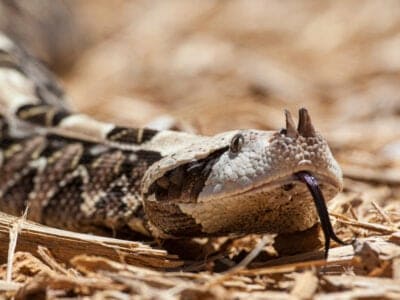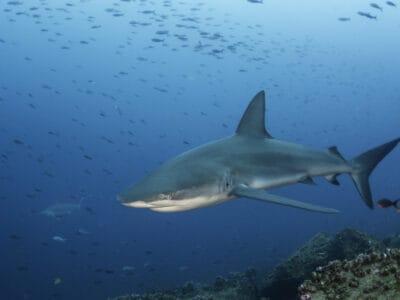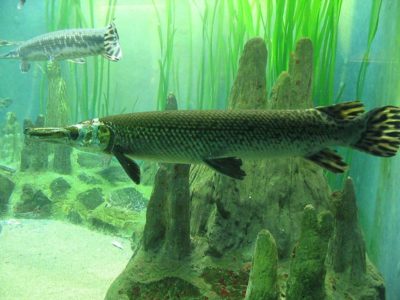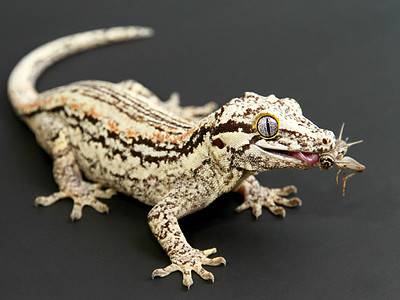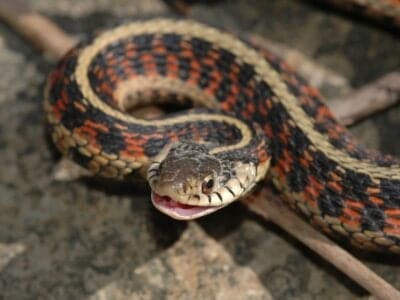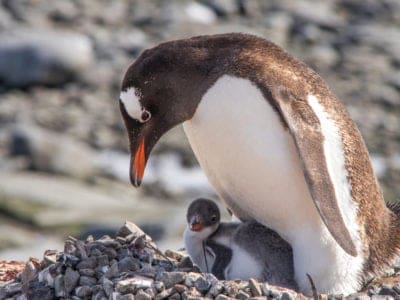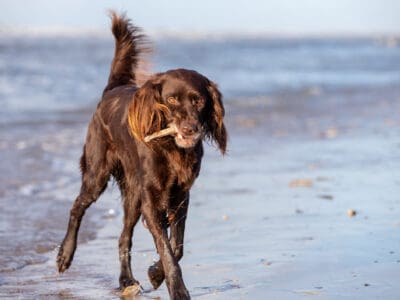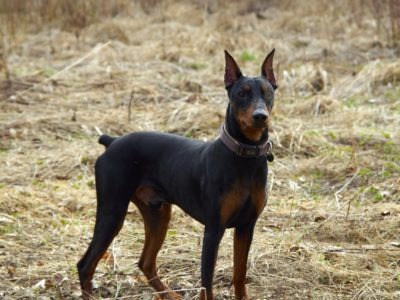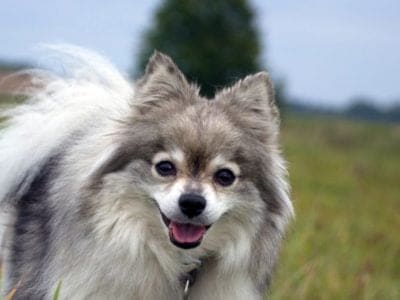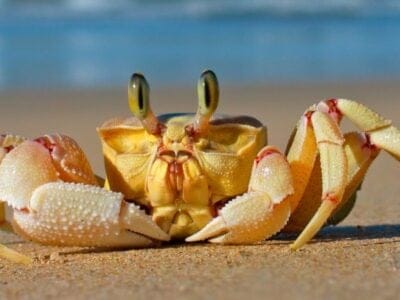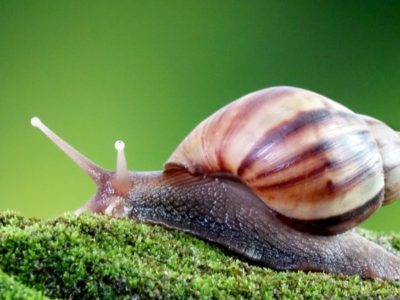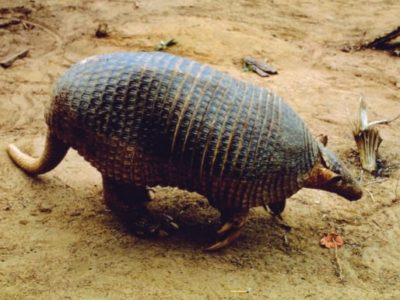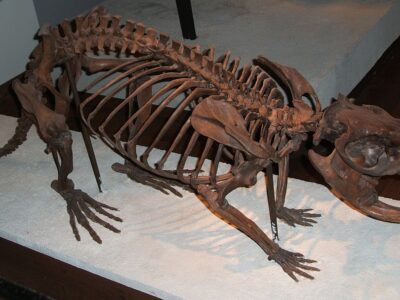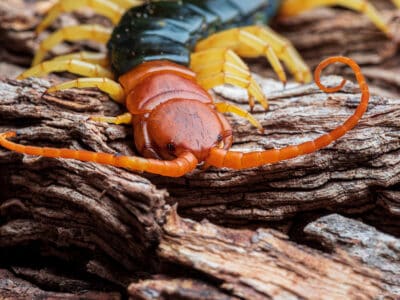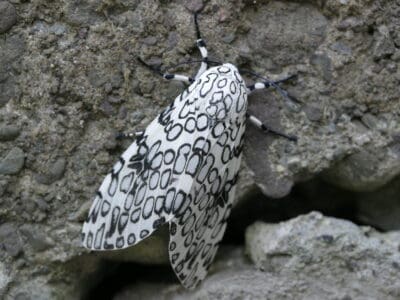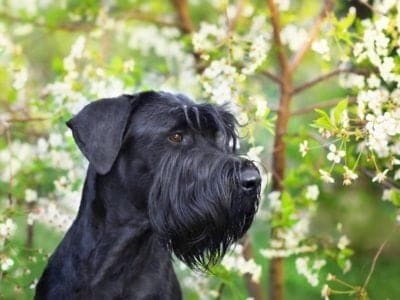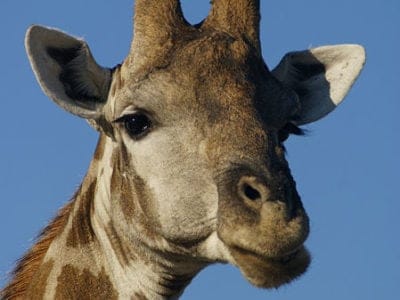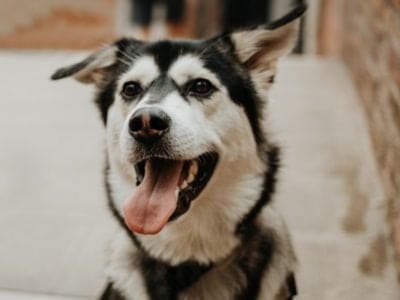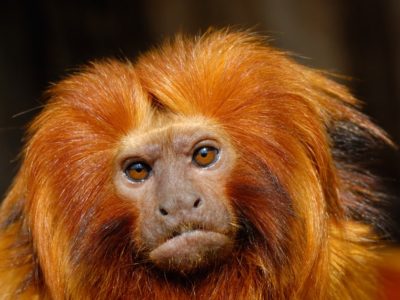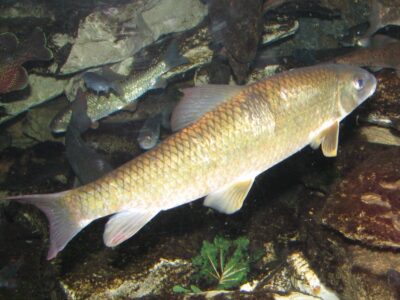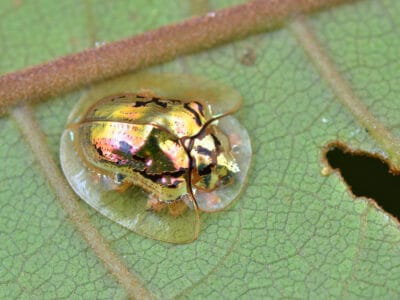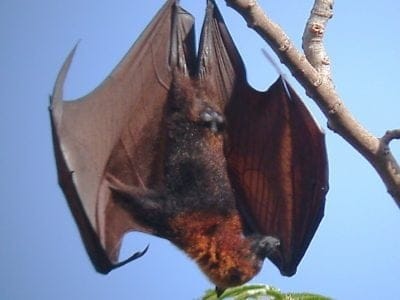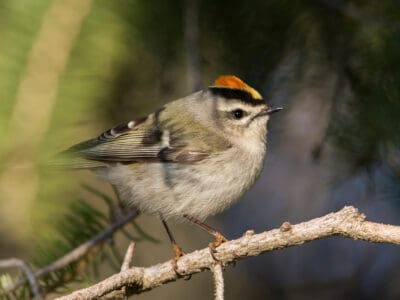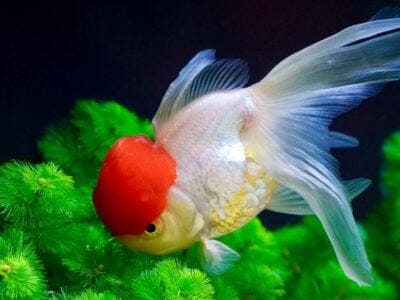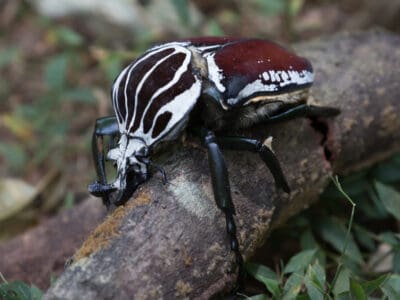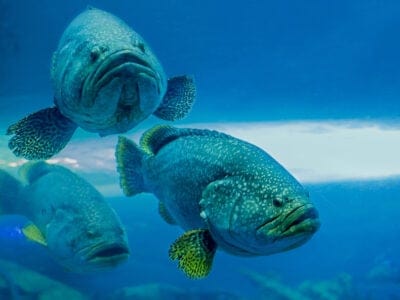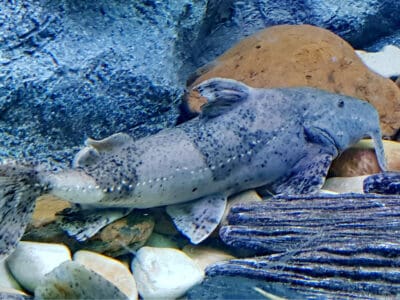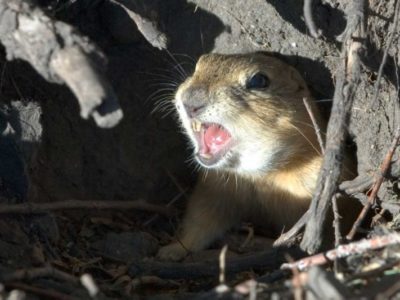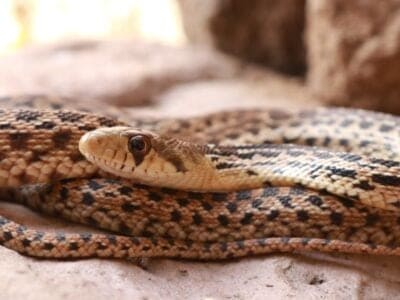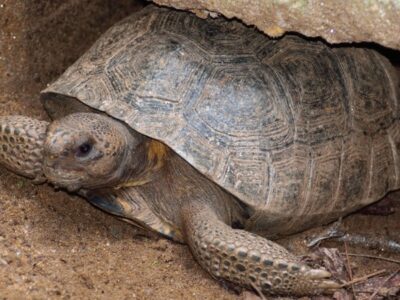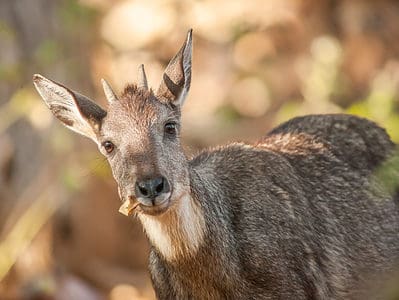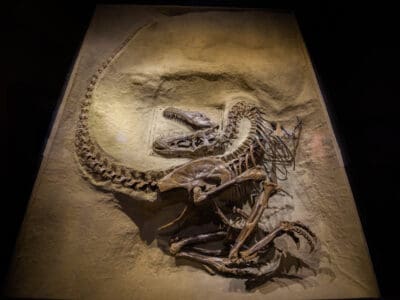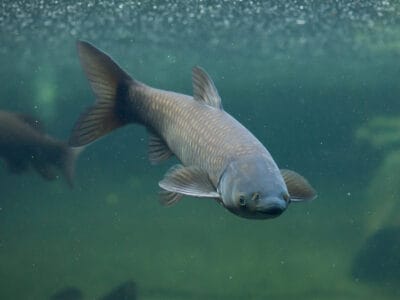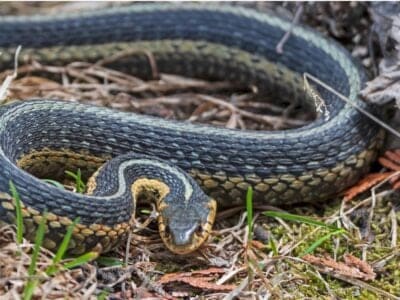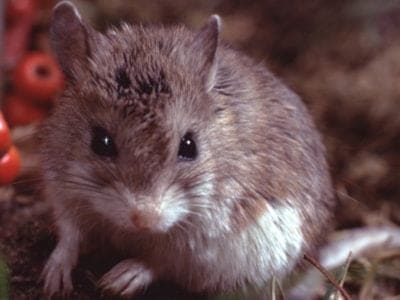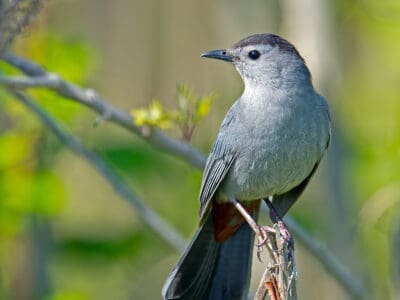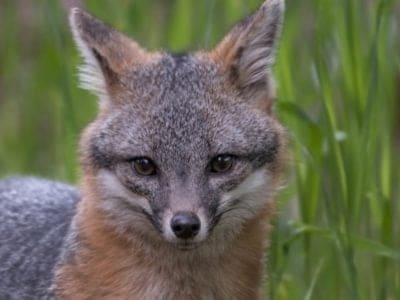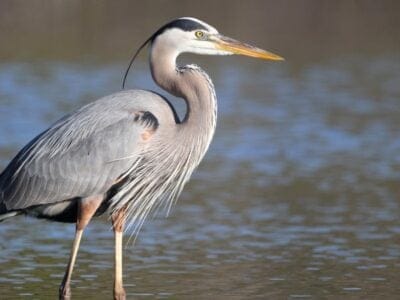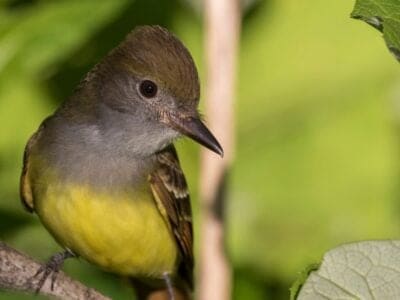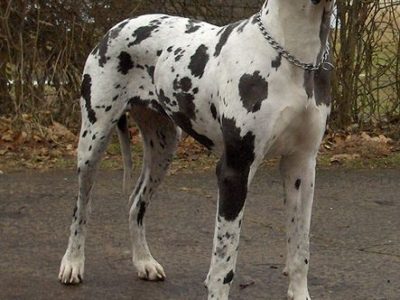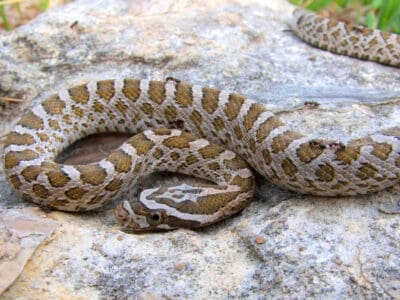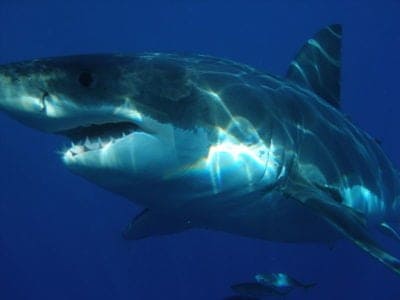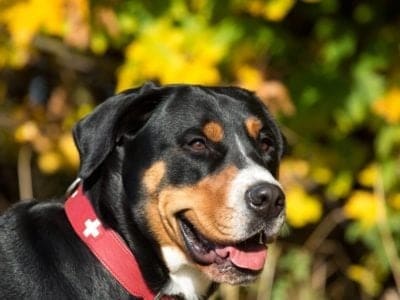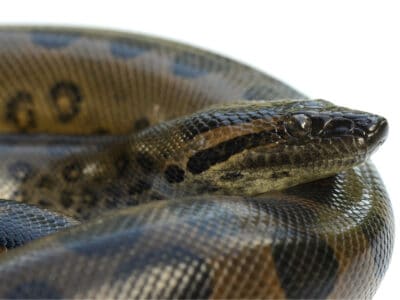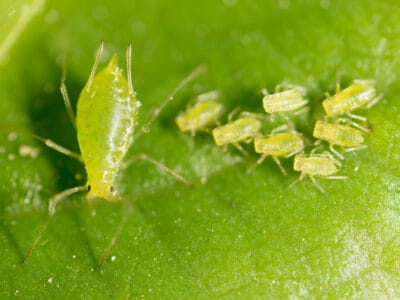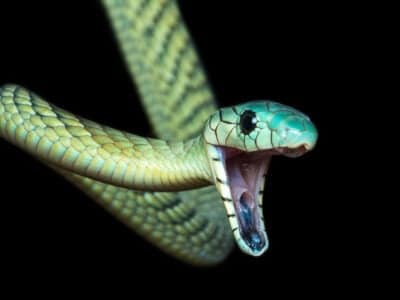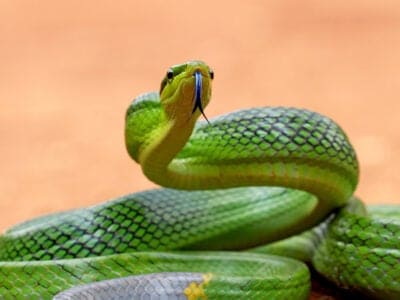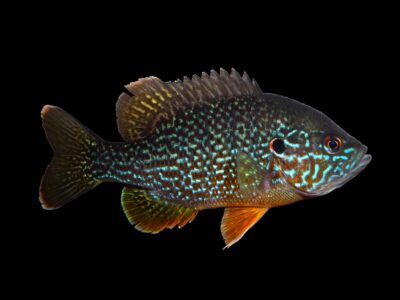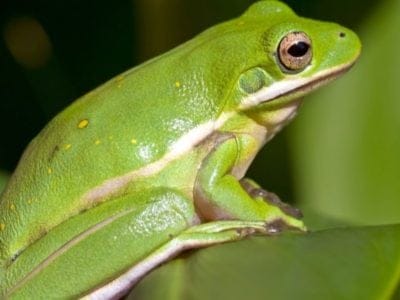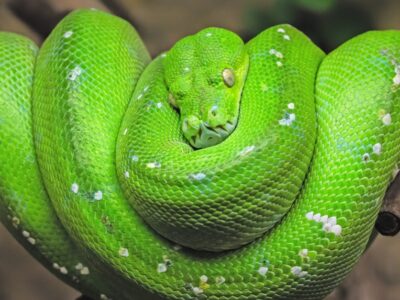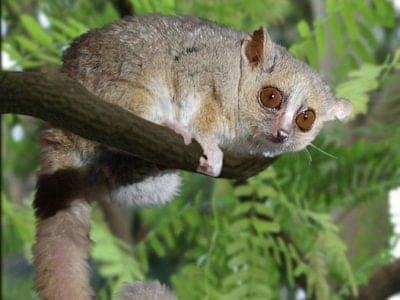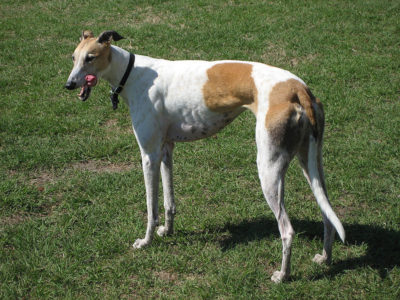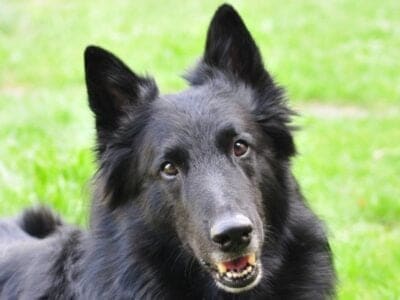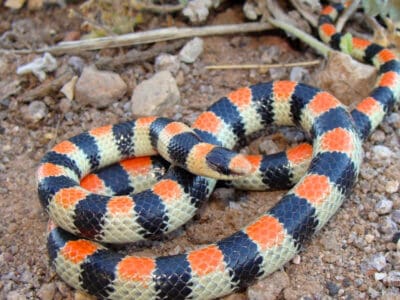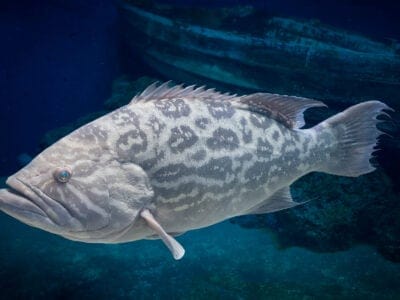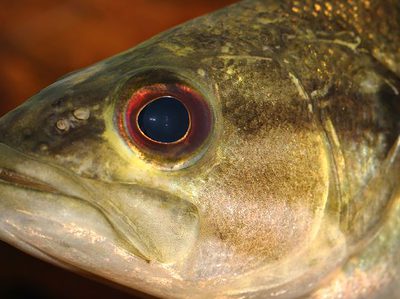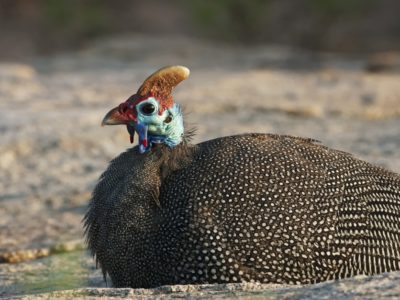Common animals that start with the letter G include the Galapagos Shark, Garden Spider, Garter Snake, Gazelle, Gecko, Genet, Gentoo Penguin, Geoffroys Tamarin, Gerbil, German Cockroach, German Longhaired Pointer, and German Pinscher.
On the page below, you’ll find information on 170 different animals that start with the letter G, from galapagos penguin to guppy. The most popular G animal is the giant panda bear, which gets up to 99% of its food from bamboo. The least popular is geoffroy’s tamarin, a small monkey located in Panama and Columbia. Some fun facts about G name animals are:
- At up to 440lbs Gorillas are the world’s largest primates
- Less than 10% of Grizzly bears make it to adulthood
- Giraffe’s distinctive black tongues can grow as long as 18 inches
Jump to any letter
Alphabetical List of Animals That Start with G
- Gaboon Viper
- Gadwall
- Galapagos Penguin
- Galapagos Shark
- Galapagos Tortoise
- Gar
- Garden Eel
- Garden Spider
- Gargoyle Gecko
- Garter Snake
- Gastornis
- Gazelle
- Gecko
- Genet
- Gentoo Penguin
- Geoffroys Tamarin
- Gerberian Shepsky
- Gerbil
- German Cockroach
- German Longhaired Pointer
- German Pinscher
- German Shepherd Guide
- German Shepherd Mix
- German Sheppit
- German Sheprador
- German Shorthaired Pointer
- German Spitz
- German Wirehaired Pointer
- Gharial
- Ghost Catfish
- Ghost Crab
- Giant African Land Snail
- Giant Armadillo
- Giant Beaver
- Giant Clam
- Giant Desert Centipede
- Giant Golden Mole
- Giant House Spider
- Giant Isopod
- Giant Leopard Moth
- Giant Panda Bear
- Giant Salamander
- Giant Schnauzer
- Giant Schnoodle
- Giant Siphonophore
- Giant Trevally
- Giant Weta
- Giant Wood Moth
- Gibbon
- Gigantopithecus
- Gila Monster
- Giraffe
- Glass Frog
- Glass Lizard
- Glechon
- Glen Of Imaal Terrier
- Glowworm
- Gnat
- Goat
- Goberian
- Goblin Shark
- Goby Fish
- Goldador
- Goldcrest
- Golden Dox
- Golden Eagle
- Golden Irish
- Golden Jackal
- Golden Lancehead
- Golden Lion Tamarin
- Golden Masked Owl
- Golden Mole
- Golden Newfie
- Golden Oriole
- Golden Pyrenees
- Golden Retriever
- Golden Retriever Mix
- Golden Saint
- Golden Shepherd
- Golden Shiner
- Golden Tortoise Beetle
- Golden Trout
- Golden-Crowned Flying Fox
- Golden-Crowned Kinglet
- Goldendoodle
- Goldfish
- Goliath Beetle
- Goliath Frog
- Goliath Grouper
- Goliath Tigerfish
- Gollie
- Gomphotherium
- Goonch Catfish
- Goose
- Gooty Sapphire Tarantula
- Gopher
- Gopher Snake
- Gopher Tortoise
- Goral
- Gordon Setter
- Gorgosaurus
- Gorilla
- Goshawk
- Gouldian Finch
- Gourami
- Grapevine Beetle
- Grass Carp
- Grass Snake
- Grass Spider
- Grasshopper
- Grasshopper Mouse
- Gray Catbird
- Gray Fox
- Gray Tree Frog
- Great Blue Heron
- Great Crested Flycatcher
- Great Dane
- Great Dane Mix
- Great Danoodle
- Great Egret
- Great Hammerhead Shark
- Great Kiskadee
- Great Plains Rat Snake
- Great Potoo Bird
- Great Pyrenees
- Great Pyrenees Mix
- Great White Shark
- Greater Swiss Mountain Dog
- Grebe
- Green Anaconda
- Green Anole
- Green Aphids
- Green Bee-Eater
- Green Bottle Blue Tarantula
- Green Frog
- Green Heron
- Green June Beetle
- Green Mamba
- Green Rat Snake
- Green Snake
- Green Sunfish
- Green Tree Frog
- Green Tree Python
- Greenland Dog
- Greenland Shark
- Grey Heron
- Grey Mouse Lemur
- Grey Reef Shark
- Grey Seal
- Greyhound
- Griffon Vulture
- Griffonshire
- Grizzly Bear
- Groenendael
- Ground Snake
- Ground Squirrel
- Groundhog (Woodchuck)
- Groundhog Tick
- Grouper
- Grouse
- Grunion
- Guadalupe Bass
- Guinea Fowl
- Guinea Pig
- Gulper Catfish
- Gulper Eel
- Guppy
- Gypsy Cuckoo Bumblebee
- Gypsy Moth
- Gypsy Moth Caterpillar
Animals that Start with G
Gaboon Viper
- Kingdom
- Animalia
- Phylum
- Chordata
- Class
- Reptilia
- Order
- Squamata
- Family
- Viperidae
- Genus
- Bitis
- Scientific Name
- Bitis gabonica
Fun Fact: Gaboon vipers are the largest vipers in Africa.
“The Gaboon Viper has the longest fangs of any snake” This strikingly patterned snake is one of the biggest venomous snakes on earth. That doesn’t so much mean length, as it rarely gets any longer than 7 feet, but weight. It is a creature of a size that’s pleased to move slowly and is slow […] Read More
Gadwall
- Kingdom
- Animalia
- Phylum
- Chordata
- Class
- Aves
- Order
- Anseriformes
- Family
- Anatidae
- Genus
- Mareca
- Scientific Name
- Mareca strepera
Fun Fact: They make many sounds when trying to attract a mate.
“During courtship displays, gadwalls make a variety of different sounds to attract a mate!” The gadwall is a common species of dabbling duck. This means that they eat their food on the surface of the water rather than diving for it. There are two subspecies, the common gadwall and the extinct Couse’s gadwall. It is […] Read More
Galapagos Penguin
- Kingdom
- Animalia
- Phylum
- Chordata
- Class
- Aves
- Order
- Sphenisciformes
- Family
- Spheniscidae
- Genus
- Spheniscus
- Scientific Name
- Spheniscus Mendiculus
Fun Fact: Found around the Equator!
“The Galapagos penguin is located farther north than any other penguin species in the world.“ It is a very rare and unusual sight indeed: a penguin living in warm climates. Charles Darwin never saw these creatures on his trip to the Galapagos, but today they are a fascinating spectacle for visiting tourists and nature lovers […] Read More
Galapagos Shark
- Kingdom
- Animalia
- Phylum
- Chordata
- Class
- Chondrichthyes
- Order
- Carcharhiniformes
- Family
- Carcharhinidae
- Genus
- Carcharhinus
- Scientific Name
- Carcharhinus galapagensis
Fun Fact: Galapagos sharks are cannibalistic and sometimes eat their young, so the pups stay away from the adults in shallow water.
“Galapagos sharks are large requiem sharks that reach lengths of 9.8 to 12.1 feet!” The Galapagos shark belongs to the family Carcharhinidae and falls under the requiem shark species. They give live birth and are migratory, preferring tropical waters. While their name might indicate that they are only found around the Galápagos Islands, they occur […] Read More
Galapagos Tortoise
- Kingdom
- Animalia
- Phylum
- Chordata
- Class
- Reptilia
- Order
- Testudines
- Family
- Testudinidae
- Genus
- Chelonoidis
- Scientific Name
- Chelonoidis nigra
Fun Fact: The biggest species of tortoise in the world!
The Galapagos tortoise is among the giants of the reptile class. Evolving over millions of years on its remote island habitat, this tortoise had almost no contact with the outside world until the permanent discovery of the island in 1535 by humans led to rapid changes with which the tortoise could not cope. Only an […] Read More
Gar
- Kingdom
- Animalia
- Phylum
- Chordata
- Class
- Actinopterygii
- Order
- Lepisosteiformes
- Family
- Lepisosteidae
- Scientific Name
- Lepisosteidae
Fun Fact: Can grow to more than 3m long!
Resembling a cross between a reptile and a fish, the garfish is a family of long-nosed carnivorous animals that inhabit the freshwaters of North America. They make slow, languid movements through the water, but this merely hides how quickly they can strike at their prey. Although numbers are dwindling in some areas, the garfish is […] Read More
Garden Eel
- Kingdom
- Animalia
- Phylum
- Chordata
- Class
- Actinopterygii
- Order
- Anguilliformes
- Family
- Congridae
Fun Fact: Garden eel colonies are made up of hundreds to thousands of individuals.
The garden eel is a type of saltwater eel that includes 35 different species. These eels spend their lives with at least their tail in the sand at all times. The full body is never completely out of the sand. Some or most of their body sticks out from the sand, making their appearance relative […] Read More
Garden Spider
- Kingdom
- Animalia
- Phylum
- Arthropoda
- Class
- Arachnida
- Order
- Araneae
- Family
- Araneidae
- Genus
- Araneus
- Scientific Name
- Araneus diadematus
Fun Fact: Garden spiders bounce in their webs to confuse predators
Summary Known for their distinctive radial-style webs, garden spiders are a common sight throughout much of Europe and North America. They live in various habitats, although you can usually find their large webs in and around gardens, hence their name. Despite their imposing size, they are not overly aggressive or dangerous to humans. In fact, […] Read More
Gargoyle Gecko
- Kingdom
- Animalia
- Phylum
- Chordata
- Class
- Reptilia
- Order
- Squamata
- Family
- Diplodactylidae
- Genus
- Rhacodactylus
- Scientific Name
- Rhacodactylus auriculatus
Fun Fact: Gargoyle Geckos are about an inch long and weigh as little as 3 grams when they hatch!
These pocket-sized geckos are cute but also starting to experience trouble surviving due to their diminishing habitat. With a broad range of colors and patterns, the Gargoyle Gecko is a fun pet. They live only in one area, New Caledonia. This French territory is located in the southwest Pacific Ocean, near Australia. This gecko calls […] Read More
Garter Snake
- Kingdom
- Animalia
- Phylum
- Chordata
- Class
- Reptilia
- Order
- Squamata
- Family
- Colubridae
- Genus
- Thamnophis
- Scientific Name
- Thamnophis sirtalis
Fun Fact: Female garter snakes give birth to live young rather than laying eggs!
The most common, widespread, and easily identified snake in North America. The garter snake (Thamnophis sirtalis), also known as the common garter snake, is native to North America. There are 13 subspecies of varying colors and patterns found in a wide range of habitats from Quebec to Florida and British Columbia to Texas. Subspecies of […] Read More
Gastornis
- Kingdom
- Animalia
- Phylum
- Chordata
- Class
- Aves
- Order
- Gastornithiformes
- Family
- Gastornithidae
- Genus
- Gastornis
- Scientific Name
- Gastornis parisiensis
Fun Fact: Gastornis had a massive beak, but they probably ate plants instead of flesh.
Gastornis is a genus of large flightless birds alive in the Mid-Paleocene to Mid-Eocene epochs of the Paleogene period. It was formerly known as Diatryma. Gastornis were giant birds with huge beaks that gave them a menacing appearance. However, contrary to expectations, this massive bird was most likely a herbivore instead of a carnivore. Description […] Read More
Gazelle
- Kingdom
- Animalia
- Phylum
- Chordata
- Class
- Mammalia
- Order
- Artiodactyla
- Family
- Bovidae
- Genus
- Gazella
- Scientific Name
- Gazella gazella
Fun Fact: Named for the Arabic word for love poems
“The name for a gazelle comes from the Arabic word for a love poem.” The gazelle is a graceful, intelligent, and alert creature. Though they once were in the thousands in Africa and Asia, this beautiful beast now only has a few hundred left in their family as the result of hunting. At great speeds, […] Read More
Gecko
- Kingdom
- Animalia
- Phylum
- Chordata
- Class
- Reptilia
- Order
- Squamata
Fun Fact: There are thought to be over 2,000 species!
“Geckos can climb vertical walls and stroll across ceilings.” Geckos have been around for at least 300 million years. Scientists have found geckos preserved in amber that dates back to the Cretaceous Period, and those specimens look remarkably like the gentle little lizards you’ll find in so many parts of the world today. There are […] Read More
Genet
- Kingdom
- Animalia
- Phylum
- Chordata
- Class
- Mammalia
- Order
- Carnivora
- Family
- Viverridae
- Genus
- Genetta
- Scientific Name
- Genetta genetta
Fun Fact: The Genet has retractable claws like a cat
When is a cat, not a cat? When it’s a genet! The genet is a type of animal called a viverrid. These animals remind people of cats and have many catlike qualities, including somewhat retractable claws and a well-developed hunting instinct, but they are more primitive. Scientists believe that the genet is the closest living […] Read More
Gentoo Penguin
- Kingdom
- Animalia
- Phylum
- Chordata
- Class
- Aves
- Order
- Sphenisciformes
- Family
- Spheniscidae
- Genus
- Pygoscelis
- Scientific Name
- Pygoscelis papua
Fun Fact: Found throughout the sub-Antarctic!
“The Gentoo Penguin is known to be the fastest swimming penguin in the world” Gentoo Penguins are, much like the other penguin species, dressed for dinner in tuxedo feathers of black coats and starched white chests. They sport a jaunty white stripe from eye to eye across the tops of their heads and flamboyant orange-red […] Read More
Geoffroys Tamarin
- Kingdom
- Animalia
- Phylum
- Chordata
- Class
- Mammalia
- Order
- Primates
- Family
- Callitrichidae
- Genus
- Saguinus
- Scientific Name
- Saguinus Geoffroyi
Fun Fact: Has distinctive V shape on head!
“A Geoffroy’s tamarin can jump up to 16 feet from one treetop to another.” Geoffroy’s tamarins are omnivores eating tree sap, insects, fruits, and various plants. They are active during the day and spend most of their time up in trees. These are social animals living in groups of 3 to 5 monkeys. They communicate […] Read More
Gerberian Shepsky
- Kingdom
- Animalia
- Phylum
- Chordata
- Class
- Mammalia
- Order
- Carnivora
- Family
- Canidae
- Genus
- Canis
- Scientific Name
- Canis lupus
Fun Fact: Gerberian Shepskies are popular choices for police dogs!
With their high energy levels, sensitive noses, and alert personalities, Gerberian Shepskies are perfect guard dogs and working companions. With fluffy fur, bright eyes, and incredibly alert senses, the Gerberian Shepsky is one of the most majestic designer dog breeds on the market. These gorgeous and loyal dogs are made by mixing a German Shepherd […] Read More
Gerbil
- Kingdom
- Animalia
- Phylum
- Chordata
- Class
- Mammalia
- Order
- Rodentia
- Family
- Muridae
Fun Fact: Originally known as the Desert Rat!
“The Gerbil is the cute and lovable rodent cannibal!” Gerbils belong to a subfamily in the Rodentia order called Gerbillinae. This subfamily includes jirds. Jirds belong to different genera than rodents formally known as gerbils, but sometimes the animals are interchangeable. Indeed, the most popular, the Mongolian gerbil, is also referred to as the Mongolian […] Read More
German Cockroach
- Kingdom
- Animalia
- Phylum
- Arthropoda
- Class
- Insecta
- Order
- Blattodea
- Family
- Ectobiidae
- Genus
- Blattella
- Scientific Name
- Blattella Germanica
Fun Fact: The most common type of urban roach
“German cockroaches are the most common type of pestilential cockroach.” With over 4,500 species of cockroach, trying to identify a single species may seem overwhelming. But, if you’ve seen a roach running around in your home, there’s a very good chance it’s a german cockroach. These roaches only live in places where humans live, that […] Read More
German Longhaired Pointer
- Kingdom
- Animalia
- Phylum
- Chordata
- Class
- Mammalia
- Order
- Carnivora
- Family
- Canidae
- Genus
- Canis
- Scientific Name
- Canis lupus
Fun Fact: German Longhaired Pointers are excellent hunters-tracking, pointing, and retrieving game over land and water. They can jump up six feet high and make wonderful emotional support dogs!
German longhaired pointers are excellent hunters — tracking, pointing, and retrieving game over land and water. They can jump 6 feet high and make wonderful emotional support dogs. German Longhaired Pointer German longhaired pointers originated in Germany in 1879 and is considered one of the oldest continental pointers. They were bred for over a century […] Read More
German Pinscher
- Kingdom
- Animalia
- Phylum
- Chordata
- Class
- Mammalia
- Order
- Carnivora
- Family
- Canidae
- Genus
- Canis
- Scientific Name
- Canis lupus
Fun Fact: Highly intelligent and fast learners!
These intelligent, short-haired dogs nearly went extinct during World War II. Origin and History As their name suggests, German pinschers hail from southern Germany. The first German pinscher was registered in 1885. These intelligent, short-haired dogs nearly went extinct during World War II. In West Germany, there was no record of registration for one from […] Read More
German Shepherd Guide
- Kingdom
- Animalia
- Phylum
- Chordata
- Class
- Mammalia
- Order
- Carnivora
- Family
- Canidae
- Genus
- Canis
- Scientific Name
- Canis Lupus
Fun Fact: Highly active and fearless dogs!
The German shepherd, or Alsatian, as British dog lovers call them, is the second most popular dog breed in the United States. This working dog from the herding group features a luxurious double coat that can be anywhere from medium to long and comes in a variety of colors such as traditional black and tan, […] Read More
German Shepherd Mix
- Kingdom
- Animalia
- Phylum
- Chordata
- Class
- Mammalia
- Order
- Carnivora
- Family
- Canidae
- Genus
- Canis
- Scientific Name
- Canis lupus
Fun Fact: These German shepherd mixes require a lot of mental stimulation; if they don't get it, they can become destructive.
German Shepherds are largely considered some of the most intelligent, lovable, and loyal canines in the world. Due to their fierce loyalty and athletic frame, they make ideal guard dogs. However, most people keep them as companions because of their love for people and children. While it’s hard to beat the German shepherd in looks […] Read More
German Sheppit
- Kingdom
- Animalia
- Phylum
- Chordata
- Class
- Mammalia
- Order
- Carnivora
- Family
- Canidae
- Genus
- Canis
- Scientific Name
- Canis lupus
Fun Fact: The German Sheppit is well-suited for guarding and police work.
The German Sheppit inherits many traits from its parents that make it well-suited for police or guard work. The German Sheppit is a first-generation hybrid between two different breeds of dogs: a German Shepherd and a Pit Bull. German Shepherds are big herding dogs that excel at many different tasks, including police work, search and […] Read More
German Sheprador
- Kingdom
- Animalia
- Phylum
- Chordata
- Class
- Mammalia
- Order
- Carnivora
- Family
- Canidae
- Genus
- Canis
- Scientific Name
- Canis lupus
Fun Fact: There is a chance that the German Sheprador may inherit a love for water from its parent.
The Labrador Retriever was originally bred to be an excellent swimmer. The German Sheprador may likewise inherit many traits that make it fast and agile in the water. The German Sheprador is an all-around excellent and obedient dog that nevertheless requires quite a lot of care and attention. It is the offspring of Labrador Retriever […] Read More
German Shorthaired Pointer
- Kingdom
- Animalia
- Phylum
- Chordata
- Class
- Mammalia
- Order
- Carnivora
- Family
- Canidae
- Genus
- Canis
- Scientific Name
- Canis lupus
Fun Fact: German Shorthaired Pointers are used by the Air Force, TSA, and other organizations to sniff out explosives.
German Shorthaired Pointers are used by the Air Force, TSA, and other organizations to sniff out explosives. German Shorthaired Pointers are the result of German Breeders perfecting a bird dog. It took breeders multiple generations to mix different dog breeds to create the German Shorthaired Pointer. This breed is known for being a quick and […] Read More
German Spitz
- Kingdom
- Animalia
- Phylum
- Chordata
- Class
- Mammalia
- Order
- Carnivora
- Family
- Canidae
- Genus
- Canis
- Scientific Name
- Canis lupus
Fun Fact: There are five different sub-breeds of the German Spitz.
Though they are believed to be bred from hunting and herding dog, the German Spitz is mostly a small companion breed nowadays. Forever loving and happy to see its owner, the German Spitz has all of the dense and thick fur that anyone could want. Available in several different colors, the German Spitz will act […] Read More
German Wirehaired Pointer
- Kingdom
- Animalia
- Phylum
- Chordata
- Class
- Mammalia
- Order
- Carnivora
- Family
- Canidae
- Genus
- Canis
- Scientific Name
- Canis lupus
Fun Fact:
German wirehaired pointers were first bred in 19th century Germany as versatile, sturdy hunting dogs that could scent and retrieve no matter the climate. The breed is a blend of many different dog types, including the pudelpointer – an early hybrid of pointers and poodle types of dogs. German wirehaired pointers also carry genetics from […] Read More
Gharial
- Kingdom
- Animalia
- Phylum
- Chordata
- Class
- Reptilia
- Order
- Crocodilia
- Family
- Gavialidae
- Genus
- Gavialis
- Scientific Name
- Gavialis gangeticus
Fun Fact: Males can blow bubbles using the bump on their snout!
Gharials have existed on Earth for more than 200 million years and have changed little in their evolution since. The gharial is a large-sized reptile that is one of the longest of all extant crocodilians at 11.8-21 feet and lives in slow-moving rivers’ murky waters on the Indian subcontinent. Also known as the Indian gharial, […] Read More
Ghost Catfish
- Kingdom
- Animalia
- Phylum
- Chordata
- Class
- Actinopterygii
- Order
- Silurormes
- Family
- Siluridae
- Genus
- Kryptopterus
- Scientific Name
- Kryptopterus vitreolus
Fun Fact: You can see its heart beating
Due to its translucent color a ghost catfish is sometimes called a glass catfish, a phantom catfish or even an X-ray fish. At its largest size, this fish is 2.5 inches long. The ghost catfish is native to inland streams in Thailand and is a popular addition to many freshwater aquariums. 3 Ghost Catfish Facts […] Read More
Ghost Crab
- Kingdom
- Animalia
- Phylum
- Arthropoda
- Class
- Malacostraca
- Order
- Decapoda
- Family
- Ocypodidae
Fun Fact: Their eyestalks, which are sometimes horned, can swivel 360 degrees
Ghost crabs are one of the most populous crab species in the world and are found on beaches from Oman to Polynesia to Australia to Florida to Egypt and Greece. Ghost crabs, also called sand crabs, can be told from their boxy shape, their sometimes horned eyestalks, and the uneven size of their claws. They […] Read More
Giant African Land Snail
- Kingdom
- Animalia
- Phylum
- Mollusca
- Class
- Gastropoda
- Order
- Achatinoidea
- Family
- Achatinidae
- Genus
- Achatina
- Scientific Name
- Achatina fulica
Fun Fact: The biggest snail species on land!
The Giant African Land Snail is a big, tough, well-traveled snail. As its name suggests, the Giant African Land Snail is one of the largest snails in the world. Although it is native to East Africa, it has been introduced in many other places. It is a destructive, agricultural pest considered one of the top […] Read More
Giant Armadillo
- Kingdom
- Animalia
- Phylum
- Chordata
- Class
- Mammalia
- Order
- Cingulata
- Family
- Chlamyphoridae
- Genus
- Priodontes
- Scientific Name
- Priodontes maximus
Fun Fact: Armadillos have a smell that’s described as strong, sweet and acrid.
The giant armadillo, also called tatou, ocarro, and other names come by its common name honestly. It is a huge animal for its order, Cingulata, and can weigh well over 71 pounds and be over 3 feet long without the tail, which can add another 20 inches to its length. It also has a huge […] Read More
Giant Beaver
- Kingdom
- Animalia
- Phylum
- Chordata
- Class
- Mammalia
- Order
- Rodentia
- Family
- Castoridae
- Genus
- Castoroides
- Scientific Name
- Castoroides
Fun Fact: The Giant Beaver are not closely related to modern beaver at all.
Now extinct, the Giant Beaver was the size of a modern-day bear! Even though they are not closely related to the beavers of today, these giant prehistoric rodents shared many of the same features. They probably didn’t build dams but did enjoy a mostly aquatic environment. They were most common in the American Midwest, although […] Read More
Giant Clam
- Kingdom
- Animalia
- Phylum
- Mollusca
- Class
- Bivalvia
- Order
- Cardiida
- Family
- Cardiidae
- Genus
- Tridacna
- Scientific Name
- Tridacna gigas
Fun Fact: Can reach nearly 4ft in length!
The giant clam is the largest, living bivalve mollusk! Giant clams grow to be about 4 feet in length. They live in the Indian and South Pacific Oceans. The exposed mantle, or soft tissue, of a giant clam features a combination of colors and patterns that can include yellow, green, iridescent blue, and purple. This […] Read More
Giant Desert Centipede
- Kingdom
- Animalia
- Phylum
- Arthropoda
- Class
- Chilopoda
- Order
- Scolopendromorpha
- Family
- Scolopendridae
- Genus
- Scolopendra
- Scientific Name
- Scolopendra heros
Fun Fact: They are the largest centipede in North America
The Giant Desert Centipede is the largest centipede in Northern America. Summary The Giant Desert Centipede is only found in two major regions but it is known by different names around the world. It is often mistaken for the Desert Centipede, which is a relative, but they both have distinct features that are different from […] Read More
Giant Golden Mole
- Kingdom
- Animalia
- Phylum
- Chordata
- Class
- Mammalia
- Order
- Afrosoricida
- Family
- Chrysochloridae
- Genus
- Chrysospalax
- Scientific Name
- Chrysospalax trevelyani
Fun Fact: The giant golden mole is able to sense vibrations through the earth because of the giant bone structure in its inner ear that works in conjunction with a bony plate which surrounds the skull.
Summary Giant golden moles are small burrowing insectivores found in the Cape region of South Africa. They belong to a larger family of golden moles (Chrysochloridae) containing 20 other species. Although they appear similar to North American, European, and Asian moles, they are not “true moles.” They seem related because of convergent evolution and have […] Read More
Giant House Spider
- Kingdom
- Animalia
- Phylum
- Arthropoda
- Class
- Arachnida
- Order
- Araneae
- Family
- Agelenidae
- Genus
- Eratigena
- Scientific Name
- Eratigena atrica
Fun Fact: They are the fastest invertebrates in the U.K.
A Giant House Spider is the larger relative of the House Spider. The female can grow to be 0.73 inches long in the body with a leg span of around 1.8 inches, while males are a little smaller in the body at 0.47-0.59 inches long but with a leg span of 0.98-2.95 inches. It is […] Read More
Giant Isopod
- Kingdom
- Animalia
- Phylum
- Arthropoda
- Class
- Malacostraca
- Order
- Isopoda
- Family
- Cironlanidae
- Genus
- Bathynomus
Fun Fact: Giant isopods are the largest group of isopods in the world
Giant Isopods Summary The giant isopod is one of the largest isopods in the world, and it can be any one of the 20 species of big isopods. These creatures are in the cold and deep waters in the Pacific, Indian, and Atlantic oceans. Giant isopods are closely related to decapods such as crabs and […] Read More
Giant Leopard Moth
- Kingdom
- Animalia
- Phylum
- Arthropoda
- Class
- Insecta
- Order
- Lepidoptera
- Family
- Erebidae
- Genus
- Arctiinae
- Scientific Name
- Hypercompe
Fun Fact: When giant leopard moths mate, their mating sessions last over 24 hours.
The giant leopard moth starts out as a prickly black caterpillar. It has orange markings across its body and although its prickly fur appears to cause injury, these bristles on their bodies aren’t urticant, which means they don’t splinter off when touched. You could touch it gently with your fingertips—although, it may curl up in […] Read More
Giant Panda Bear
- Kingdom
- Animalia
- Phylum
- Chordata
- Class
- Mammalia
- Order
- Carnivora
- Family
- Ursidae
- Genus
- Ailuropoda
- Scientific Name
- Ailuropoda melanoleuca
Fun Fact: Bamboo makes up 99 per cent of their diet!
The giant panda is a species of bear that is found in the mountains of central and western China. One of the most popular and distinguishable animals in the world, the giant panda is also one of the rarest. Habitat loss threatens this gentle creature although the Chinese government has done much to improve its […] Read More
Giant Salamander
- Kingdom
- Animalia
- Phylum
- Chordata
- Class
- Amphibia
- Order
- Urodela
- Family
- Cryptobranchidae
Fun Fact: Cryptobranchus giant salamanders breathe mostly through their skin.
Though the sight or even the thought of a nearly six-foot-long salamander may be off-putting to some people, giant salamanders play a vital role in their ecosystems. The Chinese and Japanese giant salamanders are apex predators and keep the populations of other aquatic animals in balance. The health of the much smaller hellbender and Pacific […] Read More
Giant Schnauzer
- Kingdom
- Animalia
- Phylum
- Chordata
- Class
- Mammalia
- Order
- Carnivora
- Family
- Canidae
- Genus
- Canis
- Scientific Name
- Canis lupus
Fun Fact: Large, powerful and dominant!
Giant Schnauzers originated from the Bavarian Alps somewhere around the mid-1800s. They were bred from a standard Schnauzer to be a working dogs to herd cattle from a farm to the market. Giant Schnauzers are a very large breed of dog that is black in color. They have a very loyal and protective temperament and […] Read More
Giant Schnoodle
- Kingdom
- Animalia
- Phylum
- Chordata
- Class
- Mammalia
- Order
- Carnivora
- Family
- Canidae
- Genus
- Canis
- Scientific Name
- Canis lupus
Fun Fact: Both parents of the Giant Schnoodle are hypoallergenic, making this one of the Doodle breeds that's safest for dander-sensitive owners.
Both of the Giant Schnoodle’s parent breeds are working dogs that are used to a lot of exercise. Your dog might be a bit introverted, but don’t let that fool you – these dogs need plenty of time to walk, run, and play with their families. The Giant Schnoodle is a popular designer dog that’s […] Read More
Giant Siphonophore
- Kingdom
- Animalia
- Phylum
- Cnidaria
- Class
- Hydrozoa
- Order
- Siphonophorae
- Family
- Prayidae
- Genus
- Praya
- Scientific Name
- Praya dubia
Fun Fact: The giant siphonophore is longer than the largest sea mammal – the blue whale.
The giant siphonophore is longer than the largest sea mammal – the blue whale. Giant Siphonophore Facts Giant siphonophores are bioluminescent. They can shine a bright blue in order to attract prey to themselves.Giant siphonophores are not just one animal, but a group of specialized, individual organisms that work together in a colony. These individual […] Read More
Giant Trevally
- Kingdom
- Animalia
- Phylum
- Chordata
- Class
- Actinopterygii
- Order
- Perciformes
- Family
- Carangidae
- Genus
- Caranx
- Scientific Name
- Caranx ignobilis
Fun Fact: The largest fish in its genus
Giant Trevally Summary The giant trevally (Caranx ignobilis) is a large, predatory species of fish ranging throughout the Indo-Pacific region. Alternate names for this fish include lowly or barrier trevally, giant kingfish, and ulua. It is infamous for being muscular and aggressive, which makes it a popular sport fish among anglers. Although its flesh is […] Read More
Giant Weta
- Kingdom
- Animalia
- Phylum
- Arthropoda
- Class
- Insecta
- Order
- Orthoptera
- Family
- Anostostomatidae
- Genus
- Deinacrida
- Scientific Name
- Deinacrida
Fun Fact: They've been around for 190,000,000 years!
The Giant Weta is a type of weta insect only found and restricted to New Zealand. Although the Weta is itself quite a large insect, some species of Giant Weta are the largest insects in the world. Resembling a grasshopper, the Giant Weta has been around since the age of dinosaurs and is known to […] Read More
Giant Wood Moth
- Kingdom
- Animalia
- Phylum
- Arthropoda
- Class
- Insecta
- Order
- Lepidoptera
- Family
- Cossidae
- Genus
- Endoxyla
- Scientific Name
- Endoxyla cinereus
Fun Fact: The giant wood moth is the heaviest known moth in the world.
The giant wood moth is the world’s heaviest known moth! The sighting of a giant wood moth is big news. In 2021, an individual made international news when it was spotted at an elementary school in Australia. One might think that a moth that grows up to six inches long, with a wingspan of nearly […] Read More
Gibbon
- Kingdom
- Animalia
- Phylum
- Chordata
- Class
- Mammalia
- Order
- Primates
- Family
- Hylobatidae
- Genus
- Hylobates
- Scientific Name
- Hylobatidae
Fun Fact: Found in dense jungles and tropical forests!
“The fastest-moving tree-dwelling mammal” Gibbons are tree-dwelling apes that live in Asia and Indonesia. Also known as lesser apes as distinct from great apes, gibbons are quick and agile, brachiating through the treetops at speeds up to 35 miles per hour (56 kph). There are 18 distinct species of this arboreal, or tree-dwelling, mammal, including […] Read More
Gigantopithecus
- Kingdom
- Animalia
- Phylum
- Chordata
- Class
- Mammalia
- Order
- Primates
- Family
- Hominidae
- Genus
- Gigantopithecus
- Scientific Name
- G. blacki
Fun Fact: Some cryptozoologists think that Gigantopithecus survives to this day as "The Bigfoot."
Gigantopithecus blacki is thought to be the largest ape ever to have existed. This massive hominid existed in southern China during the first half of the Pleistocene Epoch. With little evidence to uncover the specifics about the animal, anthropologists and paleontologists have gone to great lengths to discern the potential characteristics of this large and […] Read More
Gila Monster
- Kingdom
- Animalia
- Phylum
- Chordata
- Class
- Reptilia
- Order
- Squamata
- Family
- Helodermatidae
- Genus
- Heloderma
- Scientific Name
- Heloderma suspectum
Fun Fact: This lizard's tail acts as a fat-storage facility!
The Gila monster is the largest lizard in the United States! The Gila monster is not just the largest lizard in the United States, it’s one of four North American lizards that are venomous. The others are species of Mexican beaded lizards that are found in Guatemala and Mexico. Despite its venom, the Gila monster […] Read More
Giraffe
- Kingdom
- Animalia
- Phylum
- Chordata
- Class
- Mammalia
- Order
- Artiodactyla
- Family
- Giraffidae
- Genus
- Giraffa
- Scientific Name
- Giraffa camelopardalis
Fun Fact: Long, black tongue can grow to 18 inches long!
Classification and Evolution The Giraffe is a long-necked, hoofed mammal that is natively found grazing in the open woodlands of sub-Saharan Africa. The Giraffe is the tallest living animal on land and despite its height is most closely related to the much smaller and solitary Okapi, which is found elusively dwelling in dense tropical forests. […] Read More
Glass Frog
- Kingdom
- Animalia
- Phylum
- Chordata
- Class
- Amphibia
- Order
- Anura
- Family
- Centrolenidae
Fun Fact: You can see their internal organs.
“If you had a living glass frog in a high school biology class, you would not have to dissect it to see its internal organs.” Glass frogs are beautiful, exotic frog that is found in southern Mexico, Central America, and South America. Other exotic animals and fish found in this area are the caiman lizard, […] Read More
Glass Lizard
- Kingdom
- Animalia
- Phylum
- Chordata
- Class
- Reptilia
- Order
- Squamata
- Family
- Anguidae
- Genus
- Ophisaurus
- Scientific Name
- Ophisaurus
Fun Fact: Can grow up to 4ft long!
“The glass lizard has no legs but is not a snake, making it a unique and interesting member of the reptile kingdom.” The glass lizard is a legless reptile that’s native to North America. This intelligent lizard dwells everywhere between the rocky beaches of Florida to the grassy expanses of the Midwest. Hidden in these […] Read More
Glechon
- Kingdom
- Animalia
- Phylum
- Chordata
- Class
- Mammalia
- Order
- Carnivora
- Family
- Canidae
- Genus
- Canis
- Scientific Name
- Canis lupus
Fun Fact: Glechons are talented in the area of search and rescue, as their sense of smell makes them great at tracking.
The Glechon is a new breed on the scene, but one that is combined from two more well-known breeds: the beagle and the Bichon Frise. As an intelligent and fun-loving dog, they are well suited for both families and individuals seeking that perfect companion. Don’t underestimate this dog, however, because they are also known to […] Read More
Glen Of Imaal Terrier
- Kingdom
- Animalia
- Phylum
- Chordata
- Class
- Mammalia
- Order
- Carnivora
- Family
- Canidae
- Genus
- Canis
- Scientific Name
- Canis lupus
Fun Fact: This dog is also named the Wicklow Terrier after the county of its origin.
The Glen of Imaal was nicknamed the Turnspit Dog, because they were sometimes used in a mechanical contraption that turned meat over an open fire. The Glen of Imaal Terrier is a tough but fun-loving dog, built for the rough terrain of the Irish valley that bears its name. Growing up in the hills of […] Read More
Glowworm
- Kingdom
- Animalia
- Phylum
- Arthropoda
- Class
- Insecta
- Order
- Coleoptera
- Family
- Lampyridae
Fun Fact: Found inhabiting dense woodland and caves!
Glowworms are a group of light-producing insects that emit a brilliant glow. Many people appreciate their strange ethereal beauty, but there are a lot of misconceptions and confusion about what this insect actually is. For a start, the name itself is a huge misnomer. It is not really a worm at all. Instead, “glowworm” is […] Read More
Gnat
- Kingdom
- Animalia
- Phylum
- Arthropoda
- Class
- Insecta
- Order
- Diptera
Fun Fact: Males form large mating swarms at dusk
The term gnat generally refers to a group of small flies that bite and annoy humans (although it can also include some non-biting insects as well). It’s difficult to give a precise scientific definition of a gnat because it’s more of a loose casual term rather than a taxonomical one. They don’t all fit neatly […] Read More
Goat
- Kingdom
- Animalia
- Phylum
- Chordata
- Class
- Mammalia
- Order
- Artiodactyla
- Family
- Bovidae
- Genus
- Capra
Fun Fact: Most closely related to the Sheep!
The goat is a type of ungulate (a hoofed animal) with big horns and a distinguished beard. Traversing some of the most rugged and forbidden terrains in the entire world, the goat is an expert mountaineer and climber. Its astonishing ability to ascend cliffs and other vertical surfaces has few other comparisons in the animal […] Read More
Goberian
- Kingdom
- Animalia
- Phylum
- Chordata
- Class
- Mammalia
- Order
- Carnivora
- Family
- Canidae
- Genus
- Canis
- Scientific Name
- Canis lupus
Fun Fact: These dogs are great around children and are very playful around them.
Goberians are smart and healthy, alert, and make good watchdogs. They make great family pets and are known to have floppy ears. The Goberian dog is a mixed breed, combining the genetics of a Siberian Husky and a Golden Retriever for a hybrid pup. Due to the combination of the two breeds, these dogs are […] Read More
Goblin Shark
- Kingdom
- Animalia
- Phylum
- Chordata
- Class
- Chondrichthyes
- Order
- Lamniformes
- Family
- Mitsukurinidae
- Genus
- Mitsukurina
- Scientific Name
- Mitsukurina owstoni
Fun Fact: Goblin Sharks are called a living fossil because their family, Mitsukurinidae, can be traced back 125 million years.
The Goblin Shark, which is sometimes referred to as a living fossil, is a type of shark that is found in the deep sea. This unique-looking shark is easily identified by its long snout, protruding jaws, and semitranslucent skin. Goblin Sharks have been found in all three of the major oceans. Because they live so […] Read More
Goby Fish
- Kingdom
- Animalia
- Phylum
- Chordata
- Class
- Actinopterygii
- Order
- Gobiiformes
- Family
- Gobiidae
Fun Fact: Some Goby species are toxic.
Can you imagine a fish family reunion with over 2,000 members? That’s what a Goby Fish family gathering might look like. As one of the largest scientific families in the fish world, Goby Fish make great pets in your aquarium. Others make delicious meals. With over 2,000 species, this diverse family of fish has many […] Read More
Goldador
- Kingdom
- Animalia
- Phylum
- Chordata
- Class
- Mammalia
- Order
- Carnivora
- Family
- Canidae
- Genus
- Canis
- Scientific Name
- Canis lupus
Fun Fact: Goldadors were not intentionally bred until the early 2000s!
Goldadors can come in three colors: yellow/gold, black, and chocolate! Goldadors are a mix between golden retrievers and labradors, two of the most popular breeds in the world. They are more commonly known as a Golden Lab. They are loving and loyal dogs, making them among the most popular breeds of “designer dogs”. These are […] Read More
Goldcrest
- Kingdom
- Animalia
- Phylum
- Chordata
- Class
- Aves
- Order
- Passeriformes
- Family
- Regulidae
- Genus
- Regulus
- Scientific Name
- Regulus regulus
Fun Fact: The goldcrest never starts moving and needs to consume for most of the day to survive. Therefore, in the colder months, it's best that eat 90% a day.
The goldcrest is a tiny bird and the smallest in the United Kingdom (UK), measuring 3.4 inches and only weighing 0.19 ounces, which is equivalent to a nickel. Goldcrests are dull-looking birds with a greyish-green plumage, and the only thing that stands out is the fiery orange stripe along their heads. It’s hard to differentiate […] Read More
Golden Dox
- Kingdom
- Animalia
- Phylum
- Chordata
- Class
- Mammalia
- Order
- Carnivora
- Family
- Canidae
- Genus
- Canis
- Scientific Name
- Canis lupus
Fun Fact: Golden doxes don't have to be tiny. This breed looks different depending on whether the mix includes a regular dachshund or the mini version of the species.
Golden doxes don’t have to be tiny. This breed looks different depending on whether the mix includes a regular dachshund or the mini version of the species. Golden doxes are one of the most popular designer dachshund crossbreeds available on the market. A golden dox is created by mixing a dachshund with a golden retriever. […] Read More
Golden Eagle
- Kingdom
- Animalia
- Phylum
- Chordata
- Class
- Aves
- Order
- Accipitriformes
- Family
- Accipitridae
- Genus
- Aquila
- Scientific Name
- Aquila Chrysaetos
Fun Fact: Their calls sound like high-pitched screams, but they are quiet most of the time.
“The golden eagle is one of the largest birds in North America.” Summary The golden eagle (Aquila chrysaetos) lives in the northern hemisphere across four continents and over 70 countries. It inhabits semi-open areas with rocky ledges and cliffs and spends its days soaring low to the ground in search of prey. This species is […] Read More
Golden Irish
- Kingdom
- Animalia
- Phylum
- Chordata
- Class
- Mammalia
- Order
- Carnivora
- Family
- Canidae
- Genus
- Canis
- Scientific Name
- Canis Lupus
Fun Fact: They can be known as Velcro dogs because they like sticking around and are always near their owners.
The Golden Irish dog is mixed between a Golden Retriever and an Irish Setter. These dogs were originally located in Ireland and formally bred to be used as gundogs. This hybrid breed has a beautiful exterior appearance and an outgoing and friendly temperament. They enjoy the outdoors and can be energetic at times, but they […] Read More
Golden Jackal
- Kingdom
- Animalia
- Phylum
- Chordata
- Class
- Mammalia
- Order
- Carnivora
- Family
- Canidae
- Genus
- Canis
- Scientific Name
- Canis aureus
Fun Fact: roaming and adaptable candids
The golden jackal, also known as the common jackal, is a wolf-like species native to Southeastern Europe, Northeastern Africa, and South Asia. It has a yellow-brown coat which becomes darker in the winter. It has shorter legs, a short tail, an elongated body, and a narrow nozzle. They are an omnivorous species requiring large areas […] Read More
Golden Lancehead
- Kingdom
- Animalia
- Phylum
- Chordata
- Class
- Reptilia
- Order
- Squamata
- Family
- Viperidae
- Genus
- Bothrops
- Scientific Name
- B. insularis
Fun Fact: Golden lancehead snakes climb trees to prey on birds.
The island-dwelling golden lancehead snake is one of the most venomous snakes in the world. It only lives on one island 30 miles off the coast of Brazil and eats birds primarily. This is a slender pit viper with a golden color and a spearhead-shaped head. Rumors say that it caused the deaths of a […] Read More
Golden Lion Tamarin
- Kingdom
- Animalia
- Phylum
- Chordata
- Class
- Mammalia
- Order
- Primates
- Family
- Callitrichidae
- Genus
- Leontopithecus
- Scientific Name
- Leontopithecus rosalia
Fun Fact: Native to the eastern rainforests of Brazil!
The golden lion tamarin is a small monkey native to coastal Brazil. Sometimes called a golden marmoset, it has a long tail, reddish-gold fur, and a dramatic mane that frames its face. Due in part to shrinking habitat, the golden lion tamarin population has dwindled dangerously near extinction, but intensive conservation efforts over the past […] Read More
Golden Masked Owl
- Kingdom
- Animalia
- Phylum
- Chordata
- Class
- Aves
- Order
- Strigiformes
- Family
- Tytonidae
- Genus
- Tyto
- Scientific Name
- Tyto aurantia
Fun Fact: While flying high above this owl can hear a mouse moving in the tall grass of field!
“Golden masked owls have long legs and strong talons allowing them to scoop up rodents from the ground” The golden masked owl is known for its whitish/yellow heart-shaped face and large dark eyes. This owl is a carnivore eating small rodents, birds, insects, rabbits, and sometimes other owls. The feathers on its wings are designed […] Read More
Golden Mole
- Kingdom
- Animalia
- Phylum
- Chordata
- Class
- Mammalia
- Order
- Afrosoricida
- Family
- Chrysochloridae
Fun Fact: The golden mole is so named because of its iridescent coat, which gives it a shining, rainbow-like effect.
Summary They are a sub-Saharan family of small, burrowing insectivores of 21 species. Though they are not “true moles,” there is a striking resemblance, as they are tailless and blind and have powerful shoulders with short limbs and strong front claws for shoveling dirt or sand. 5 Interesting Golden Mole Facts The golden mole is […] Read More
Golden Newfie
- Kingdom
- Animalia
- Phylum
- Chordata
- Class
- Mammalia
- Order
- Carnivora
- Family
- Canidae
- Genus
- Canis
- Scientific Name
- Canis lupus
Fun Fact: These dogs love to swim and instinctively know how to swim.
A Golden Newfie is a hybrid mix between the golden retriever and the Newfoundland dogs. These crossbreed dogs love swimming and are extremely patient with children. The Golden Newfie is a handsome and confident dog. It is a combination of golden retrievers and Newfoundland dogs. These hybrid dogs are sweet and gentle and are known […] Read More
Golden Oriole
- Kingdom
- Animalia
- Phylum
- Chordata
- Class
- Aves
- Order
- Passeriformes
- Family
- Oriolidae
- Genus
- Oriolus
- Scientific Name
- Oriolus oriolus
Fun Fact: Migrates between Europe and Asia!
Golden Oriole Classification and Evolution The Golden Oriole (also known as the Eurasian Oriole), is a small species of Bird found throughout Europe and western Asia. The Golden Oriole’s name is thought to have arisen during the 18th century after the classical Latin word meaning gold. Although almost indistinguishable in appearance, some believe that the […] Read More
Golden Pyrenees
- Kingdom
- Animalia
- Phylum
- Chordata
- Class
- Mammalia
- Order
- Carnivora
- Family
- Canidae
- Genus
- Canis
- Scientific Name
- Canis lupus
Fun Fact: Golden Pyrenees make great therapy dogs due to their intelligence and gentle nature.
Despite the Golden Pyrenees’ tremendous size, it has been described as a gentle giant. A Golden Pyrenees is a mix between two purebreds: A Golden Retriever and a Great Pyrenees. This hybrid dog, also called the Great Pytreiver, is relatively new to the dog world. It was bred to combine the best qualities of two […] Read More
Golden Retriever
- Kingdom
- Animalia
- Phylum
- Chordata
- Class
- Mammalia
- Order
- Carnivora
- Family
- Canidae
- Genus
- Canis
- Scientific Name
- Canis Lupus
Fun Fact: Trusting, kind and gentle!
Originating from the serene and picturesque hills of the Scottish Highlands, the golden retriever is the very epitome of loyalty and affection. History and Origin The first major breeder was Dudley Marjoribanks, the Baron of Tweedmouth, who created the golden retriever in the 19th century by crossing a yellow retriever with the now-extinct tweed water […] Read More
Golden Retriever Mix
- Kingdom
- Animalia
- Phylum
- Chordata
- Class
- Mammalia
- Order
- Carnivora
- Family
- Canidae
- Genus
- Canis
- Scientific Name
- Canis lupus
Fun Fact: While gollies make good watchdogs since they generally bark when there is a newcomer at the door, they are not the best guard dogs. Instead of intimidating the stranger, they typically run up to the intruder and greet them with a waggy tail.
Golden retrievers are, without a doubt, one of the most popular dog breeds ever! They are smart, friendly, and incredibly devoted to their loved ones. Therefore their intelligence and attentive nature make them brilliant guide and therapy dogs. Additionally, breeders adore them because when they combine this dog’s genetics with other breeds, the result is […] Read More
Golden Saint
- Kingdom
- Animalia
- Phylum
- Chordata
- Class
- Mammalia
- Order
- Carnivora
- Family
- Canidae
- Genus
- Canis
- Scientific Name
- Canis lupus
Fun Fact: Golden saints come in all kinds of colors. You can find them in tan, chocolate, yellow, brindled, spotted, and almost any other pattern you can think of.
Golden saints come in all kinds of colors. You can find them in tan, chocolate, yellow, brindle, spotted, and almost any other pattern you can think of. The golden saint is a designer crossbreed made by crossing a Saint Bernard with a golden retriever. These dogs are known for having a great temperament and being […] Read More
Golden Shepherd
- Kingdom
- Animalia
- Phylum
- Chordata
- Class
- Mammalia
- Order
- Carnivora
- Family
- Canidae
- Genus
- Canis
- Scientific Name
- Canis lupus
Fun Fact: The Golden Shepherds were first recognized by the International Designer Canine Registry in 2009.
With its strong heritage, the Golden Shepherd makes for an excellent watchdog, service dog, and overall companion and friend. The Golden Shepherd is an eclectic mix between a Golden Retriever and a German Shepherd. Both breeds have a fascinating history. The Golden Retriever was originally bred in the Scottish Highlands as an exuberant gundog that […] Read More
Golden Shiner
- Kingdom
- Animalia
- Phylum
- Chordata
- Class
- Actinopterygii
- Order
- Cypriniformes
- Family
- Cyprinidae
- Genus
- Notemigonus
- Scientific Name
- Notemigonus crysoleucas
Fun Fact: One of the most popular bait fish in the US.
The golden shiner (Notemigonus crysoleucas) is a member of the Old World true minnow family Leuciscinae. You can find golden shiners throughout eastern North America, including the United States and Canada. Anglers often used golden shiners as bait fish to catch larger fish, including largemouth bass, crappie, and walleye. Thanks to their shiny golden scales, […] Read More
Golden Tortoise Beetle
- Kingdom
- Animalia
- Phylum
- Arthropoda
- Class
- Insecta
- Order
- Coleoptera
- Family
- Chrysomelidae
- Genus
- Charidotella
- Scientific Name
- Charidotella sexpunctata
Fun Fact: Golden tortoise beetles have a metallic gold color which can change to dull brown when disturbed.
The golden tortoise beetle is a species of insect in the leaf beetle family, known for its striking gold color. They have rounded, domed bodies, similar to that of ladybugs. This beetle has a unique ability to change the shade of its pigmentation from bright to dull gold using microscopic cavities in its cuticle. When […] Read More
Golden Trout
- Kingdom
- Animalia
- Phylum
- Chordata
- Class
- Actinopterygii
- Order
- Salmoniformes
- Family
- Salmonidae
- Genus
- Oncorhynchus
- Scientific Name
- Oncorhynchus aguabonita
Fun Fact: Freshwater state fish of California
Also known as the California golden trout, Oncorhynchus aguabonita is the freshwater state fish of California. This rare species of Pacific trout is native to a few waterways near the southern end of the Sierra Nevada mountains. Widely considered one of the most beautiful trout in the world, golden trout sport colorful yellow, red, and […] Read More
Golden-Crowned Flying Fox
- Kingdom
- Animalia
- Phylum
- Chordata
- Class
- Mammalia
- Order
- Chiroptera
- Family
- Pteropodidae
- Genus
- Acerodon
- Scientific Name
- Acerodon jubatus
Fun Fact: They eat figs almost exclusively
The golden-crowned flying fox has a wingspan of up to five-and-a-half feet. This bat lives in the jungles of the Philippines, in colonies of up to 10,000 members. Though it has a large wingspan, this bat is small physically, with a body that measures between 7 and 11.4 inches long. The golden-crowned flying fox eats […] Read More
Golden-Crowned Kinglet
- Kingdom
- Animalia
- Phylum
- Chordata
- Class
- Aves
- Order
- Passeriformes
- Family
- Regulidae
- Genus
- Regulus
- Scientific Name
- Regulus Satrapa
Fun Fact: They huddle together for warmth
They huddle together for warmth. The golden-crowned kinglet has a distinctive, flashy yellow crown and black eyebrow stripes, making them easy to differentiate. However, they prefer to stay on the tops of high trees; it requires patience to get a good look. These birds are tiny, but they can remarkably survive in cold climates by […] Read More
Goldendoodle
- Kingdom
- Animalia
- Phylum
- Chordata
- Class
- Mammalia
- Order
- Carnivora
- Family
- Canidae
- Genus
- Canis
- Scientific Name
- Canis lupus
Fun Fact: Due to their breeding, no two Goldendoodles are alike.
Goldendoodles are a type of hybrid dog, though their pedigree sometimes earns them the name “designer dog.” They come from a blend of a golden retriever and a poodle and were bred so that the personality and temperament of both these dogs could be combined and brought forward. They are medium-sized and often have a […] Read More
Goldfish
- Kingdom
- Animalia
- Phylum
- Chordata
- Class
- Actinopterygii
- Order
- Cypriniformes
- Family
- Cyprinidae
- Genus
- Carassius
- Scientific Name
- Carassius auratus
Fun Fact: Goldfish and common carp can mate and produce offspring
People started breeding Goldfish of different colors in China 1000 years ago. Only members of the imperial Song dynasty were allowed to own them. Once thought fit only for emperors, the goldfish has become a well-loved pet. Intelligent and curious as well as beautiful, it is hardy and can live a long time. Read on […] Read More
Goliath Beetle
- Kingdom
- Animalia
- Phylum
- Arthropoda
- Class
- Insecta
- Order
- Coleoptera
- Family
- Scarabaeidae
- Genus
- Goliathus
Fun Fact: Goliath beetles are the largest beetles in the world, and they can carry objects several times their weight.
Goliath beetles are the largest beetles in the world, and they can carry objects several times their weight. Summary Goliath beetles refer to any of the six species of beetles in the genus Goliathus. As their name implies, goliath beetles are the largest beetles in the world. Interestingly, their weight is highest when they’re juveniles […] Read More
Goliath Frog
- Kingdom
- Animalia
- Phylum
- Chordata
- Class
- Amphibia
- Order
- Anura
- Family
- Conrauidae
- Genus
- Conraua
- Scientific Name
- Conraua goliath
Fun Fact: Does not have a vocal sac.
“The Goliath Frog is the largest frog in the world!” The Goliath Frog is an endangered species of frog that lives exclusively in Equatorial Guinea and Cameroon in Africa. It can also be referred to as a goliath bullfrog or a giant slippery frog. This amphibian got its name due to its large size. These […] Read More
Goliath Grouper
- Kingdom
- Animalia
- Phylum
- Chordata
- Class
- Actinopterygii
- Order
- Perciformes
- Family
- Scombridae
- Genus
- Epinephelinae
- Scientific Name
- Epinephelus itajara
Fun Fact: Massive reef fish with a strong tail
The goliath grouper is a huge saltwater fish that lives in tropical and subtropical waters worldwide. Goliath Grouper Summary The goliath grouper is a critically endangered large saltwater fish that lives in tropical and subtropical waters worldwide. They are typically brown or green in color, can grow up to 8 feet long, and weigh up […] Read More
Goliath Tigerfish
- Kingdom
- Animalia
- Phylum
- Chordata
- Class
- Actinopterygii
- Order
- Characiformes
- Family
- Alestidae
- Genus
- Hydorcynus
- Scientific Name
- Hydrocynus goliath
Fun Fact: Featured in "River Monsters" TV series!
Some people call the Goliath Tigerfish a “fish on steroids” or the African version of the piranha. Whatever you call it, the Goliath tigerfish is one scary animal. These strong fish are considered demon fish by some African tribespeople. While some aquarists keep them as exotic pets, it’s best to know how to handle them […] Read More
Gollie
- Kingdom
- Animalia
- Phylum
- Chordata
- Class
- Mammalia
- Order
- Carnivora
- Family
- Canidae
- Genus
- Canis
- Scientific Name
- Canis lupus
Fun Fact: They bark at strangers, cars, and loud noises like airplanes.
The Gollie has a combination of both the Golden Retriever and the Collie. Even though the Golden Retriever and Collie’s ancestry connection took place in Scotland, surprisingly, Gollie dogs were bred in the surroundings of the USA. The most significant part about owning a Gollie is that this hybrid breed inherited charming and attentive characteristics […] Read More
Gomphotherium
- Kingdom
- Animalia
- Phylum
- Chordata
- Class
- Mammalia
- Order
- Proboscidea
- Family
- Gomphotheriidae
- Genus
- Gomphotherium
Fun Fact:
Gomphotherium Description & Size Gomphotherium was a genus of extinct proboscides that lived during the Neogene and early Pleistocene periods, which were part of the Cenozoic Era. In Latin, this species’ name translated to “welded beast,” an accurate descriptor for the tough hide and large tusks. What Did Gomphotherium Eat? Gomphotherium was an herbivore eating […] Read More
Goonch Catfish
- Kingdom
- Animalia
- Phylum
- Chordata
- Class
- Actinopterygii
- Order
- Siluriformes
- Family
- Sisoridae
- Genus
- Bagarius
- Scientific Name
- Bagarius yarrelli
Fun Fact: The goonch catfish, or giant devil catfish, is one of the most fierce freshwater fish.
The goonch catfish, or giant devil catfish, is one of the most fierce freshwater fish. This fish has no natural predators, and has, in the past, terrorized villages with its attacks on villagers and large mammals drinking and bathing. The largest attacks, known as the Kali River attacks, occurred between 1998 and 2007. The attacks […] Read More
Goose
- Kingdom
- Animalia
- Phylum
- Chordata
- Class
- Aves
- Order
- Anseriformes
- Family
- Anatidae
Fun Fact: There are 29 different species!
The goose is among a group of large waterfowl that resides in the Northern Hemisphere. This bird’s loud, aggressive behavior has become something of a running joke in modern media (epitomized by the popular action puzzle video game, Untitled Goose Game), but as a very caring parent, it is usually just trying to protect its […] Read More
Gooty Sapphire Tarantula
- Kingdom
- Animalia
- Phylum
- Arthropoda
- Class
- Arachnida
- Order
- Araneae
- Family
- Theraphosidae
- Genus
- Poecilotheria
- Scientific Name
- Poecilotheria metallica
Fun Fact: They can run up a tree trunk surprisingly fast.
One of the naturally blue animals in the world. Gooty sapphire tarantulas are a brilliant blue color. Their unique coloration makes them a popular tarantula in the pet trade. Originally from Gooty, India these fascinating tarantulas are sometimes also called metallic blue tarantulas or peacock parachute spiders. They are a rare tarantula located only in […] Read More
Gopher
- Kingdom
- Animalia
- Phylum
- Chordata
- Class
- Mammalia
- Order
- Rodentia
- Family
- Geomyidae
- Genus
- Geomys
- Scientific Name
- Geomys bursarius
Fun Fact: They dig large networks of tunnels!
“A gopher’s head looks twice as big when the pouches in its cheeks are stuffed with food” Gophers are rodents that live in North America and Central America. They are herbivorous animals that eat a variety of plants. Though these rodents are active in the daytime they stay mostly underground in tunnels. They are solitary […] Read More
Gopher Snake
- Kingdom
- Animalia
- Phylum
- Chordata
- Class
- Reptilia
- Order
- Squamata
- Family
- Colubridae
- Genus
- Pituophis
- Scientific Name
- Pituophis catenifer
Fun Fact: Gopher snakes can reach up to 9 feet long.
Gopher Snake Summary “Gopher snakes can reach up to 9 feet long.“ The gopher snake, which includes 6 subspecies, is found primarily in the western United States, southern Canada, and northern Mexico. It thrives in arid climates below 2,000 feet altitude, and it is carnivorous. Though it has no venom, it has a painful bite […] Read More
Gopher Tortoise
- Kingdom
- Animalia
- Phylum
- Chordata
- Class
- Reptilia
- Order
- Testudines
- Family
- Testudinidae
- Genus
- Gopherus
- Scientific Name
- Gopherus polyphemus
Fun Fact: It is the only species of tortoise native to Florida.
“ The gopher tortoise is a real Keystone species” The gopher tortoise is quite an interesting animal. It is land-dwelling and spends most of its time underground in burrows. The front limbs are built for digging these burrows and do an excellent job at the excavation. The burrows it digs provide shelter for at least […] Read More
Goral
- Kingdom
- Animalia
- Phylum
- Chordata
- Class
- Mammalia
- Order
- Artiodactyla
- Family
- Bovidae
- Genus
- Naemorhedus
Fun Fact: A mix between a goat and an antelope
Gorals belong to the genus Naemorhedus in the goat-antelope subfamily Caprinae. Found throughout central and eastern Asia, gorals feature short, backward-facing horns and light-gray or reddish-brown coats. They can scale rocky terrain with ease and live in some of the most inaccessible mountain habitats in the world. Due to habitat loss and hunting, the IUCN […] Read More
Gordon Setter
- Kingdom
- Animalia
- Phylum
- Chordata
- Class
- Mammalia
- Order
- Carnivora
- Family
- Canidae
- Genus
- Canis
- Scientific Name
- Canis lupus
Fun Fact: It's the largest and heaviest breed of setter.
The Gordon Setter is one of the slowest breeds to mature, hitting its prime at 3 years or older. The Gordon Setter, also called Black and Tan Setter, is the largest, heaviest breed of setters. It was originally developed in Scotland for bird hunting, using its scent to find game birds but without killing them, […] Read More
Gorgosaurus
- Kingdom
- Animalia
- Phylum
- Chordata
- Class
- Reptilia
- Order
- Saurischia
- Family
- Tyrannosauridae
- Genus
- Gorgosaurus
- Scientific Name
- Gorgosaurus libratus
Fun Fact: Gorgosaurus probably lived and hunted in packs.
Gorgosaurus was a tyrannosaurid theropod dinosaur that lived during the Late Cretaceous Period, between 76.6 and 75.1 million years ago. It was an earlier relative of the Tyrannosaurus rex. The heavily-built carnivore was an apex predator that preyed on ceratopsids and Hadrosaurus dinosaurs that lived in the same habitat. The Gorgosaurus is also one of […] Read More
Gorilla
- Kingdom
- Animalia
- Phylum
- Chordata
- Class
- Mammalia
- Order
- Primates
- Family
- Hominidae
- Genus
- Gorilla
Fun Fact: The biggest of the world's primates!
“The gorilla is one of the closest living relatives to humans.” The name gorilla actually refers to four different subspecies of animals. They share 98 percent of their DNA with humans, and they are smart enough to learn sign language and use tools. Gorillas are far from the wild, violent beasts portrayed in entertainment, and […] Read More
Goshawk
- Kingdom
- Animalia
- Phylum
- Chordata
- Class
- Aves
- Order
- Accipitriformes
- Family
- Accipitridae
- Genus
- Accipiter
- Scientific Name
- Accipiter gentilis
Fun Fact: The goshawk is a popular choice among European falconers
The goshawk is among the most common birds of prey around the world. Goshawk may refer to more than a dozen different species, most of them a member of the genus Accipiter. The most popular and well-known species is the northern goshawk, which can be found across the Northern Hemisphere. Unless otherwise mentioned, this article […] Read More
Gouldian Finch
- Kingdom
- Animalia
- Phylum
- Chordata
- Class
- Aves
- Order
- Passeriformes
- Family
- Estrildidae
- Genus
- Erythrura
- Scientific Name
- Erythrura gouldiae
Fun Fact: The male Gouldian finch bobs its head and fluffs its feathers to court a female.
With one of the most striking plumages in the entire animal kingdom, the Gouldian finch almost looks like it was put together in patches. The head, breast, abdomen, and back all exhibit an elegant rainbow of different colors. It’s no surprise that this species is highly sought after in the pet trade. After decades of […] Read More
Gourami
- Kingdom
- Animalia
- Phylum
- Chordata
- Class
- Actinopterygii
- Order
- Anabantiformes
- Family
- Osphronemidae
Fun Fact: Gourami fishes show parental care for their young
Gourami fish show parental care for their young. Summary The name “gourami” refers to fish species in the families Osphronemidae and Helostomatidae. There are more than nine fishes in these families, and they all live in tropical freshwaters. Gourami fish are native to Asia. They come in a range of colors and patterns. Although they’re […] Read More
Grapevine Beetle
- Kingdom
- Animalia
- Phylum
- Arthropoda
- Class
- Insecta
- Order
- Cole
- Family
- Scarabaeidae
- Genus
- Pelidnota
- Scientific Name
- Pelidnota punctata
Fun Fact: Although they feed on grapevine leaves, Grapevine beetles hardly cause serious damage to the plant.
Although they feed on grapevine leaves, Grapevine beetles hardly cause serious damage to the plant. Summary The Grapevine beetle is a type of Scarab beetle. It shares a similar appearance to the Japanese Beetles and June Beetles. In fact, this beetle is commonly called the spotted June beetle due to its similarity in appearance to […] Read More
Grass Carp
- Kingdom
- Animalia
- Phylum
- Chordata
- Class
- Actinopterygii
- Order
- Cypriniformes
- Family
- Cyprinidae
- Genus
- Ctenopharyngodon
- Scientific Name
- Ctenopharyngodon idella
Fun Fact: The grass carp is considered to be a natural weed control agent.
First originating from eastern Asia, the grass carp has since been introduced to many different countries for the purpose of maintaining clear waters. The grass carp is used as a form of plant or weed controller in ponds or lakes around the world. Only sterile fish are allowed for legal use in many states to […] Read More
Grass Snake
- Kingdom
- Animalia
- Phylum
- Chordata
- Class
- Reptilia
- Order
- Squamata
- Family
- Colubridae
- Genus
- Natrix
- Scientific Name
- Natrix natrix
Fun Fact: Use acute hearing to hunt
This common snake is of the nonvenomous variety and is also called the ringed snake and water snake. The common grass snakes’ colors are gray or green with a white or yellow neck collar. They have identification marks of interlinked yellow and black on the neck, forming a ring or band. The face is a […] Read More
Grass Spider
- Kingdom
- Animalia
- Phylum
- Arthropoda
- Class
- Arachnida
- Order
- Araneae
- Family
- Agelenidae
- Genus
- Agelenopsis
- Scientific Name
- Agelenopsis
Fun Fact: Their fangs aren't big enough to penetrate human skin.
Grass spiders are often found mainly in the grass, as you can determine by their name. But they might wander off to other places. They are one of the 1,200 funnel-web spider species that create a blackhole-shaped webs through their large spinnerets. You will often find these webs more than you will find the grass […] Read More
Grasshopper
- Kingdom
- Animalia
- Phylum
- Arthropoda
- Class
- Insecta
- Order
- Orthoptera
- Family
- Caelifera
Fun Fact: There are 11,000 known species!
Grasshoppers comprise one of the oldest insect families on earth. The first grasshoppers probably appeared 250 million years ago during the Triassic period. They belong to the Arthropoda phylum, which includes other insects as well as spiders, scorpions, crabs, and their relatives. Phylum is a category that biologists slot living things into, and Arthropoda, which […] Read More
Grasshopper Mouse
- Kingdom
- Animalia
- Phylum
- Chordata
- Class
- Mammalia
- Order
- Rodentia
- Family
- Cricetidae
- Genus
- Onychomys
Fun Fact: The grasshopper mice attack predators using the poison of their venom.
Grasshopper mice are rodents with big ears and big eyes. They are nocturnal and are closely related to deer mice. They are small and are usually only 120-190 mm in length. Adult grasshopper mice weigh about 20 to 50 grams.They got this name because they are not timid as mice usually are and are known […] Read More
Gray Catbird
- Kingdom
- Animalia
- Phylum
- Chordata
- Class
- Aves
- Order
- Passeriformes
- Family
- Mimidae
- Genus
- Dumetella
- Scientific Name
- Dumetella carolinensis
Fun Fact: Their songs have cat-like qualities and can mimic other birds and animals, like tree frogs.
“Listen for their mechanical, raspy mimicry as they hide in bushes and trees.” Summary The gray catbird (Dumetella carolinensis) is a medium-sized songbird native to North America. It inhabits dense vegetative areas like overgrown farmland and abandoned orchards, where it prefers to hide in thorny thickets and sing its songs of mimicry. Look for this […] Read More
Gray Fox
- Kingdom
- Animalia
- Phylum
- Chordata
- Class
- Mammalia
- Order
- Carnivora
- Family
- Canidae
- Genus
- Urocyon
- Scientific Name
- Urocyon cinereoargenteus
Fun Fact: The gray fox has retractable claws and a rotating wrist that allow it to climb trees with some proficiency
The gray fox is a small, shy member of the canine family that likes to hide in shrubs and trees. This species may not be as well-known as its red-colored cousin, but it’s one of the most common species of foxes in North America. These animals are not usually seen by people because of their […] Read More
Gray Tree Frog
- Kingdom
- Animalia
- Phylum
- Chordata
- Class
- Amphibia
- Order
- Anura
- Family
- Hylidae
- Genus
- Hyla
- Scientific Name
- Hyla versicolor
Fun Fact: This frog can "freeze" itself by making glycerol that becomes glucose, which acts like antifreeze and stops its heartbeat and breathing!
The gray tree frog can vary its color to match its environment and appear gray, green, and brown! The gray tree frog is a large species of tree frog that can take on many colors despite its name. It is commonly found in southeastern Canada and the eastern United States. The gray tree frog spends […] Read More
Great Blue Heron
- Kingdom
- Animalia
- Phylum
- Chordata
- Class
- Aves
- Order
- Pelecaniformes
- Family
- Ardeidae
- Genus
- Ardea
- Scientific Name
- Ardea herodias
Fun Fact: Their wingspan is larger than an eagle’s; both males and females help hatch the eggs; rich in symbolism
The Great Blue Heron is a large water bird found primarily in North America. They have beautiful plumage and an impressive wingspan size. Native people believe there is symbolism in seeing one of these birds. 4 Incredible Great Blue Heron facts! Some of the most interesting facts about Great Blue Herons are: These birds only […] Read More
Great Crested Flycatcher
- Kingdom
- Animalia
- Phylum
- Chordata
- Class
- Aves
- Order
- Passeriformes
- Family
- Tyrannidae
- Genus
- Myiarchus
- Scientific Name
- Myiarchus crinitus
Fun Fact: This species makes use of some truly unusual nesting material, including snakeskin and garbage
The great crested flycatcher is a fascinating and elegant songbird with a big crest on its head and a luxurious mating call. Often obscured by foliage and trees, it’s usually heard more often than it’s seen. This species is considered to be a member of the tyrant flycatcher family, a diverse group of birds entirely […] Read More
Great Dane
- Kingdom
- Animalia
- Phylum
- Chordata
- Class
- Mammalia
- Order
- Carnivora
- Family
- Canidae
- Genus
- Canis
- Scientific Name
- Canis lupus
Fun Fact: Large and imposing in appearance!
Sometimes called “the Apollo of Dogs,” Great Danes are a giant German working breed that was originally developed by German nobles as a boarhound. Ranking at number 16 on the American Kennel Club’s most popular list, these gentle giants will steal your heart as well as your sofa. They have short, smooth coats that come […] Read More
Great Dane Mix
- Kingdom
- Animalia
- Phylum
- Chordata
- Class
- Mammalia
- Order
- Carnivora
- Family
- Canidae
- Genus
- Canis
- Scientific Name
- Canis familiaris
Fun Fact: Great Dane mixed breed dogs tend to have a longer lifespan than Great Dane purebreds.
Great Dane mix breed dogs are an exciting and unique breed of dog. They are a mix of two purebreds, usually a Great Dane and another dog breed, such as a Labrador Retriever, Boxer, or German Shepherd. Although Great Dane mix breed dogs have a wide variety of coat colors and patterns, their personalities can […] Read More
Great Danoodle
- Kingdom
- Animalia
- Phylum
- Chordata
- Class
- Mammalia
- Order
- Carnivora
- Family
- Canidae
- Genus
- Canis
- Scientific Name
- Canis lupus
Fun Fact: Both Great Danes and Poodles are in the top 15 most popular AKC breeds - which makes Great Danoodles a shoo-in for popularity.
Great Danoodles are descended from Great Danes, the tallest dogs in the world. Although they don’t always have the same height as their ancestors, Great Danoodles still have famously long legs and will tower over other Doodle dogs. Great Danes are incredibly popular dogs, and so are poodles. Because of this, it should come as […] Read More
Great Egret
- Kingdom
- Animalia
- Phylum
- Chordata
- Class
- Aves
- Order
- Pelecaniformes
- Family
- Ardeidae
- Genus
- Ardea
- Scientific Name
- Ardea alba
Fun Fact: The male egret performs an elaborate courtship display to attract a mate
Great Egret Summary “The great egret has long legs that look a bit like stilts.“ Great egrets spend all their lives near wetlands and swamps. The legs help them wade easily through the shallow water in search of food. While they live in colonies, great egrets sometimes compete with each other for mates. This article […] Read More
Great Hammerhead Shark
- Kingdom
- Animalia
- Phylum
- Chordata
- Class
- Chondrichthyes
- Order
- Carcharhiniformes
- Family
- Sphyrnidae
- Genus
- Sphyrna
- Scientific Name
- Sphyrna mokarran
Fun Fact: Great hammerhead sharks have a 360 view because their eyes are situated on the ends of their mallet-like heads.
“The heaviest great hammerhead shark ever recorded weighed a whopping 1280 pounds” The great hammerhead shark is found in warmer waters and is the biggest of nine subspecies. Generally, they grow up to 10-14 feet long. However, there are records of a female over 20 feet! Great hammerhead sharks are solitary animals that migrate to […] Read More
Great Kiskadee
- Kingdom
- Animalia
- Phylum
- Chordata
- Class
- Aves
- Order
- Passeriformes
- Family
- Tyrannidae
- Genus
- Pitangus
- Scientific Name
- Pitangus sulphuratus
Fun Fact: The great kiskadee is a highly adaptable predator that can live in almost any habitat within its range and can hunt in the air, on the ground and in the water.
The Great Kiskadee is a highly adaptable predator that can live almost anywhere! The Great Kiskadee is a bright and colorful bird recognized by its yellow belly, reddish-brown back, and black and white striped head. The kiskadee was named because of its unique call. Observers describe it as sounding a lot like kis-ka-dee, or bee-tee-wee. […] Read More
Great Plains Rat Snake
- Kingdom
- Animalia
- Phylum
- Chordata
- Class
- Reptilia
- Order
- Squamata
- Family
- Colubridae
- Genus
- Pantheropis
- Scientific Name
- Pantheropis emoryi
Fun Fact: This snake vigorously shakes its tail as a way to frighten away predators.
“This snake vigorously shakes its tail as a way to frighten away predators” Normally, the Great Plains rat snake is two to three feet in length. However, there are some that grow to a size of five feet! These snakes have a diet of rodents, birds, and bats. They live in a plains and grassland […] Read More
Great Potoo Bird
- Kingdom
- Animalia
- Phylum
- Chordata
- Class
- Aves
- Order
- Nyctibiiformes
- Family
- Nyctibiidae
- Genus
- Nyctibius
- Scientific Name
- Nyctibius grandis
Fun Fact: At night, they make a terrifying low call that sounds like a distressed moan or growl.
It has a harsh, terrifying call. The great potoo is the largest of its species and has a wide range throughout Central and South America. This bird is nocturnal and produces a low call that sounds similar to a distressed moan or growl at night, terrifying anyone nearby. Despite its terrifying vocalizations, great potoos are […] Read More
Great Pyrenees
- Kingdom
- Animalia
- Phylum
- Chordata
- Class
- Mammalia
- Order
- Carnivora
- Family
- Canidae
- Genus
- Canis
- Scientific Name
- Canis lupus
Fun Fact:
The Great Pyrenees has been around for centuries. They are likely descents of guardian dogs that were in Asia Minor around 10,000 b.c. Around the year 3,000 b.c, nomadic shepherds went to the Pyrenees mountains and brought their guarding dogs with them. This was likely the beginning of the Great Pyrenees breed. Great Pyrenees are […] Read More
Great Pyrenees Mix
- Kingdom
- Animalia
- Phylum
- Chordata
- Class
- Mammalia
- Order
- Carnivora
- Family
- Canidae
- Genus
- Canis
- Scientific Name
- Canis lupus
Fun Fact: The collie Pyrenees is quite expensive, with puppies from reputable breeders starting at $1000. However, depending on the pedigree, and breeder, they can fetch twice that price.
The great Pyrenees is a powerful, large, and thick-coated working dog specifically bred to protect sheep from prowling wolves and other predators. However, today they are bred as companions and guard dogs. These gentle giants can only be described as majestic, and their caring nature makes them great for families. But because of their size […] Read More
Great White Shark
- Kingdom
- Animalia
- Phylum
- Chordata
- Class
- Chondrichthyes
- Order
- Lamniformes
- Family
- Lamnidae
- Genus
- Carcharodon
- Scientific Name
- Carcharodon carcharias
Fun Fact: Can grow to more than 8 meters long!
Classification The great white shark, Carcharodon carcharias, is a large shark found mainly inhabiting temperate and tropical coastal waters worldwide. They are the largest predatory fish species in the world, known to grow to lengths of 8 meters or more and weighing over 2 tons (4,000 pounds). Great white sharks are huge, powerful predators that […] Read More
Greater Swiss Mountain Dog
- Kingdom
- Animalia
- Phylum
- Chordata
- Class
- Mammalia
- Order
- Carnivora
- Family
- Canidae
- Genus
- Canis
- Scientific Name
- Canis lupus
Fun Fact: Protective and gentle by nature!
Being a strong draft breed, the Greater Swiss Mountain Dog is powerful and large in size. These dogs are covered in double coats, featuring an undercoat that is thick and an outer coat that is dense. The coat is about 1-1.5 inches long. The Greater Swiss Mountain Dog is incredibly animated, showing exactly how they […] Read More
Grebe
- Kingdom
- Animalia
- Phylum
- Chordata
- Class
- Aves
- Order
- Podicipediformes
- Family
- Podicipedidae
- Genus
- Podiceps
- Scientific Name
- Podilymbus podiceps, Tachybaptus ruficollis, and others
Fun Fact: They swim like frogs
They are closely related to flamingos. Grebes are freshwater diving birds native to freshwater and marine habitats. They inhabit every continent except for Antarctica and any arid environment. They are excellent swimmers and divers, and while they resemble other diving birds, they are more closely related to flamingos. Learn all about the fascinating grebe, like […] Read More
Green Anaconda
- Kingdom
- Animalia
- Phylum
- Chordata
- Class
- Reptilia
- Order
- Squamata
- Family
- Boidae
- Genus
- Eunectes
- Scientific Name
- E. murinus
Fun Fact: Females are often five times longer than males.
The green anaconda is the heaviest snake globally and the species most people refer to when they say “anaconda.” It’s not venomous, but this giant snake lives in South America and sometimes reaches 30 feet long. It eats caiman and capybara and is big enough to eat deer and goats; some stories have them eating […] Read More
Green Anole
- Kingdom
- Animalia
- Phylum
- Chordata
- Class
- Reptilia
- Order
- Squamata
- Family
- Dactyloidae
- Genus
- Anolis
- Scientific Name
- Anolis carolinensis
Fun Fact: It communicates with head movements, color and dewlap
The green anole is the only anole that is native to the United States and is one of the best reptiles for first-time reptile owners. The small lizard is native to Georgia and South Carolina, found in the Southeastern United States from Florida to Texas along with the Caribbean islands. It is an arboreal species […] Read More
Green Aphids
- Kingdom
- Animalia
Fun Fact:
Green Aphid Scientific Classification Kingdom: Animalia Phylum: Arthropoda Class: Insecta Order: Hemiptera Family: Aphididae Genus: Myzus Species: M. persicae Read our Complete Guide to Classification of Animals. Green Aphid Conservation Status Not extinct Green Aphid Locations Worldwide, warm climates Green Aphid Facts Prey: (Herbivores) Aphids suck the juices from plant leaves, stems, and roots. Name […] Read More
Green Bee-Eater
- Kingdom
- Animalia
- Phylum
- Chordata
- Class
- Aves
- Order
- Coraciiformes
- Family
- Meropidae
- Genus
- Merops
- Scientific Name
- Merops orientalis
Fun Fact: Mainly eats honeybees!
The green bee-eater, or little green bee-eater, is one of the smallest birds in the bee-eater family. It is known for its small size, unique sound, slender body, and bright plumage as well as for being one of the most beautiful birds. It is found in a variety of wooded areas throughout sub-Saharan Africa, western […] Read More
Green Bottle Blue Tarantula
- Kingdom
- Animalia
- Phylum
- Arthropoda
- Class
- Arachnida
- Order
- Araneae
- Family
- Theraphosidae
- Genus
- Chromatopelma
- Scientific Name
- Chromatopelma cyaneopubescens
Fun Fact: The spiderlings look very different than the adults.
A beautiful green, blue and orange tarantula. Green bottle blue tarantulas are vibrant green and burnt orange with bright blue legs. Their carapace is covered in greenish bristles/hairs and their abdomen is covered in orange bristles that look almost like fur. While you can barely see some tarantula’s eyes, green bottle blue has two prominent […] Read More
Green Frog
- Kingdom
- Animalia
- Phylum
- Chordata
- Class
- Amphibia
- Order
- Anura
- Family
- Ranidae
- Genus
- Lithobates
- Scientific Name
- Lithobates clamitans
Fun Fact: Green frogs will eat any animal that they can fit in their mouth.
The green frog is known for being one of the least picky eaters and will consume just about any insect or animal that it can swallow. One of the most common frogs native to the eastern states and parts of Canada, the green frog can be found just about anywhere there is a body of […] Read More
Green Heron
- Kingdom
- Animalia
- Phylum
- Chordata
- Class
- Aves
- Order
- Pelecaniformes
- Family
- Ardeidae
- Genus
- Butorides
- Scientific Name
- Butorides virescens
Fun Fact: Uses bait to catch prey
The green heron is a little bird, and it ranges greatly in its preferred environment. Primarily found in the United States (including Hawaii), Mexico, and Central America, these beautiful creatures make their presence known with many identifiable calls. They are carnivores, but their diet is primarily of fish. They’ll mate monogamously for the breeding season, […] Read More
Green June Beetle
- Kingdom
- Animalia
- Phylum
- Arthropoda
- Class
- Insecta
- Order
- Coleoptera
- Family
- Scarabaeidae
- Genus
- Cotinis
- Scientific Name
- Cotinis nitida
Fun Fact: • Green June beetles will appear to mate in early summer, typically in May or June. This is why they are also known as May beetles. Therefore, it is very uncommon to see these beetles any other time.
The green June beetle is also called the June beetle, May beetle, or June bug, and they are abundant in the South of Canada and the eastern United States. These bugs are notorious for their destructive and violent behavior. As a result, they are particularly problematic for farmers in Texas. Green June beetles are diurnal […] Read More
Green Mamba
- Kingdom
- Animalia
- Phylum
- Chordata
- Class
- Reptilia
- Order
- Squamata
- Family
- Elapidae
- Genus
- Dendroaspis
Fun Fact: Green mambas are fast, and can travel up to 7 miles per hour.
Green mambas are fast and can travel up to 7 miles per hour. In the thick forests of Western and Eastern Africa, you might find a deadly creature slithering through the Cashew and Coconut trees. These highly venomous, and stunningly beautiful, snakes have two varieties – the Western and Eastern Green Mambas. These long, slender […] Read More
Green Rat Snake
- Kingdom
- Animalia
- Phylum
- Chordata
- Class
- Reptilia
- Order
- Squamata
- Family
- Colubridae
- Genus
- Gonyosoma
- Scientific Name
- Gonyosoma oxycephalum
Fun Fact: The green rat snake catches its meals in midair!
The green rat snake catches its meals in midair! The green rat snake is common in Southeast Asia but spends most of its time out of sight, high in the trees where it feels most comfortable. Non-venomous, the snake grabs birds and bats in midflight when it is ready for a meal. It will also […] Read More
Green Snake
- Kingdom
- Animalia
- Phylum
- Chordata
- Class
- Reptilia
- Order
- Squamata
- Family
- Colubridae
- Genus
- Opheodrys
- Scientific Name
- Opheodrys
Fun Fact: There are two types of green snakes: smooth green snakes and rough green snakes
Green snakes feature beautifully bright green dorsal scales and help control insect populations in gardens, crops, or wherever they live. Green snakes are the only solid, bright green snakes in North America. There are two species, the smooth green snake and the rough green snake, and they are nonvenomous and non-threatening to humans. Instead, they […] Read More
Green Sunfish
- Kingdom
- Animalia
- Phylum
- Chordata
- Class
- Actinopterygii
- Order
- Perciformes
- Family
- Centrarchidae
- Genus
- Lepomis
- Scientific Name
- Lepomis cyanellus
Fun Fact: Juvenile Green Sunfish are less colorful than their parents because they need to blend in with their surroundings to avoid predators.
The Green Sunfish is a small freshwater fish that occur throughout the USA and northern Mexico. American Anglers refer to them as panfish because they are small enough to fry whole but not too small to be illegal. They are the most common of all sunfishes and live in various habitats across North America. While […] Read More
Green Tree Frog
- Kingdom
- Animalia
- Phylum
- Chordata
- Class
- Amphibia
- Order
- Anura
Fun Fact: Green tree frogs breathe through their skin
“Three different amphibians are called Green Tree Frog!” Among the more than 800 tree frog species in the world, three share the moniker “green tree frog.” The Australian green tree frog measures approximately 4 inches long, and its back is a bright jade green, while the American green tree frog measures approximately 2.5 inches long, […] Read More
Green Tree Python
- Kingdom
- Animalia
- Phylum
- Chordata
- Class
- Reptilia
- Order
- Squamata
- Family
- Pythonidae
- Genus
- Morelia
- Scientific Name
- Morelia viridis
Fun Fact: Green tree pythons are non-venomous, so to subdue their prey, they have a couple of very unique and highly successful hunting techniques.
Though the green tree python is relegated to a relatively localized population in and around Oceania, their distinctively bright green appearance and interest from amateur snake enthusiasts have transformed them into increasingly popular pets. Despite that, these are wild and cunning snakes whose reputation for being aggressive is rooted in an inherent shyness towards humans. […] Read More
Greenland Dog
- Kingdom
- Animalia
- Phylum
- Chordata
- Class
- Mammalia
- Order
- Carnivora
- Family
- Canidae
- Genus
- Canis
- Scientific Name
- Canis lupus
Fun Fact: Strong and speedy breed of dog!
The Greenland Dog, aka the Greenland Husky, is a medium to large working dog breed valued for its strength, speed, and toughness in drawing sleds, racing, and hunting. History and Origin The Spitz-type dog and rare, genetically distinct husky has a strong, powerful body and thick fur. Although it is identical to the Canadian Eskimo […] Read More
Greenland Shark
- Kingdom
- Animalia
- Phylum
- Chordata
- Class
- Chondrichthyes
- Order
- Squaliformes
- Family
- Somniosidae
- Genus
- Somniosus
- Scientific Name
- Somniosus microcephalus
Fun Fact: This shark has the longest lifespan of any vertebrate.
“The Greenland shark is considered the Methuselah of Sharks.” The Greenland shark, called eqalussuaq by the Inuit people is famous for living to a great age. Biologists believe that this large, slow fish can live to be half a millennia old. Its longevity probably has something to do with the fact that it does everything […] Read More
Grey Heron
- Kingdom
- Animalia
- Phylum
- Chordata
- Class
- Aves
- Order
- Ciconiiformes
- Family
- Ardeidae
- Genus
- Ardea
- Scientific Name
- Ardea cinerea
Fun Fact: Male grey herons are picky about their mates. They'll reject a female that they don't fancy.
Symbol of Peace and the Sun Though grey heron chicks may take sibling rivalry to a new level, this beautiful bird has been a symbol of all good things since antiquity. Read on for more information about Ardea cinerea. Five Amazing Facts About the Grey Heron Here are five amazing facts about the grey heron: […] Read More
Grey Mouse Lemur
- Kingdom
- Animalia
- Phylum
- Chordata
- Class
- Mammalia
- Order
- Primates
- Family
- Cheirogaleidae
- Genus
- Microcebus
- Scientific Name
- Microcebus murinus
Fun Fact: The largest species of mouse lemur!
“The Grey Mouse Lemur is a mouse-like primate with a powerful nose and big jump.” Grey mouse lemurs, also called lesser mouse lemurs, are among the smallest primate species in the entire world. Even though their size, color and body shape is reminiscent of a common mouse, they are very different than rodents in physiology […] Read More
Grey Reef Shark
- Kingdom
- Animalia
- Phylum
- Chordata
- Class
- Chondrichthyes
- Order
- Carcharhiniformes
- Family
- Carcharhinidae
- Genus
- Carcharhinus
- Scientific Name
- Carcharhinus Amblyrhynchos
Fun Fact: One of the most common shark species!
Grey reef sharks are voracious marine predators that prefer shallow waters and are among the most common sharks found in coral reef habitats throughout the Indo-Pacific region. They share many characteristics with other reef shark species, including a wide, circular snout positioned directly in front of relatively large eyes. While they have many classic features […] Read More
Grey Seal
- Kingdom
- Animalia
- Phylum
- Chordata
- Class
- Mammalia
- Order
- Carnivora
- Family
- Phocidae
- Genus
- Halichoerus
- Scientific Name
- Halichoerus Grypus
Fun Fact: One of the rarest species of seal on Earth
“A grey seal can dive 1,500 feet below the surface of the ocean and stay under for an hour.” A grey seal is one of the rarest species of seal alive today. They can adapt to life on a coastline but go to the ocean when hunting for food. These seals can live from 25 […] Read More
Greyhound
- Kingdom
- Animalia
- Phylum
- Chordata
- Class
- Mammalia
- Order
- Carnivora
- Family
- Canidae
- Genus
- Canis
- Scientific Name
- Canis Lupus
Fun Fact: Extremely fast and athletic!
The greyhound is the fastest breed of dog, and retired racing greyhounds make for calm and sweet pets. The greyhound has the highest percentage of fast-twitch muscle of any breed. In spite of this reputation, retired racing greyhounds make for calm and sweet pets. It is also called the English greyhound to avoid confusion with […] Read More
Griffon Vulture
- Kingdom
- Animalia
- Phylum
- Chordata
- Class
- Aves
- Order
- Accipitriformes
- Family
- Accipitridae
- Genus
- Gyps
- Scientific Name
- Gyps fulvus
Fun Fact: Can spot a dead animal from thousands of feet away
“The Griffon Vulture can see carrion from thousands of feet above the ground” Its eight-to-nine-foot wingspan is just one of the many impressive facts about a griffon vulture. They are found in Europe, Africa, and parts of Asia. These birds are carnivores eating carrion. Griffon vultures build their nests on cliff ledges. It can live […] Read More
Griffonshire
- Kingdom
- Animalia
- Phylum
- Chordata
- Class
- Mammalia
- Order
- Carnivora
- Family
- Canidae
- Genus
- Canis
- Scientific Name
- Canis lupus
Fun Fact: Griffonshires are so little they are easily mistaken for puppies throughout their lives.
It’s not uncommon for Griffonshire adults to be mistaken for puppies due to their small size. Breed a Brussels Griffon with a Yorkshire Terrier and you have a puppy called a Griffonshire. Griffonshires were first bred in the decade of the 1980s. These small dogs possess some of the best qualities of each of their […] Read More
Grizzly Bear
- Kingdom
- Animalia
- Phylum
- Chordata
- Class
- Mammalia
- Order
- Carnivora
- Family
- Ursidae
- Genus
- Ursus
- Scientific Name
- Ursus Arctos Horriblis
Fun Fact: Less than 10% make it into adulthood
The Grizzly Bear–A Misunderstood Creature The Grizzly bear is a type of brown bear that was once plentiful in the western and northwestern United States. The animal is also known as the North American Brown Bear. The name “grizzly” comes from the light tips on the bear’s fur, which gives it a grizzled or silvery […] Read More
Groenendael
- Kingdom
- Animalia
- Phylum
- Chordata
- Class
- Mammalia
- Order
- Carnivora
- Family
- Canidae
- Genus
- Canis
- Scientific Name
- Canis lupus
Fun Fact: These dogs are highly trainable and can learn excellent manners!
Although developed as a herding dog, this breed makes an excellent guard and working dog and is used by police forces and the military. The Groenendael is one of four breeds that originated in Belgium. Instantly recognized by its pricked ears and luxurious black coat, the breed is well suited for many activities and makes […] Read More
Ground Snake
- Kingdom
- Animalia
- Phylum
- Chordata
- Class
- Reptilia
- Order
- Squamat
- Family
- Colubridae
- Genus
- Sonora
- Scientific Name
- Sonora semiannulata
Fun Fact: It’s sometimes called a miter snake due to the marking on its head that looks like a bishop’s miter
The western ground snake uses its thick head to dig burrows in its sandy habitat. The western ground snake goes by a couple of other names including the common ground snake and the variable ground snake. It’s native to North America, specifically the southwestern portion of the United States as well as northern Mexico. This […] Read More
Ground Squirrel
- Kingdom
- Animalia
- Phylum
- Chordata
- Class
- Mammalia
- Order
- Rodentia
- Family
- Sciuridae
Fun Fact: Ground squirrels are adept excavators and can dig colonial burrows larger than football fields!
Ground squirrels are adept excavators and can dig colonial burrows larger than football fields! Ground squirrels are rodents in the Sciuridae family. Many members of this group are called ground squirrels, but some are also known as marmots, prairie dogs and chipmunks. These rodents live mostly on the ground, although they can climb when necessary. […] Read More
Groundhog (Woodchuck)
- Kingdom
- Animalia
- Phylum
- Chordata
- Class
- Mammalia
- Order
- Rodentia
- Family
- Sciuridae
- Genus
- Marmota
- Scientific Name
- Marmota monax
Fun Fact: They whistle to each other to warn of approaching danger!
“Unlike other marmots, they prefer low-lying areas.” The groundhog is a large lowland rodent found throughout most of the United States. and Canada. Like all rodents, they are curious, intelligent animals who can survive in various environments. They belong to a group of ground squirrels known as marmots. Other names for this animal include woodchuck, […] Read More
Groundhog Tick
- Kingdom
- Animalia
- Phylum
- Arthropoda
- Class
- Arachnida
- Order
- Ixodida
- Family
- Ixodidae
- Genus
- Ixodes
- Scientific Name
- Ixodes cookei
Fun Fact: Groundhog ticks carry the Powassan virus which can cause brain-swelling.
Groundhog ticks carry the Powassan virus which can cause brain-swelling. Groundhog Tick Facts The groundhog tick is a small but deadly parasite. It is a vector of the Powassan virus which causes Powassan encephalitis and meningitis.Groundhog ticks inhabit grassy and forestry areas, but they can live comfortably in crevices inside your house as well. This […] Read More
Grouper
- Kingdom
- Animalia
- Phylum
- Chordata
- Class
- Actinopterygii
- Order
- Perciformes
- Family
- Serranidae
- Scientific Name
- Epinephelinae
Fun Fact: Many grouper can change their sex, and it is always from female to male.
The Grouper is one of the biggest bony fish in the sea. Groupers are fish with stout bodies and huge mouths that let them suck in their prey at a distance and gulp the food down whole. The meat of a grouper is delicious, which has become problematic as too many species are now overfished. […] Read More
Grouse
- Kingdom
- Animalia
- Phylum
- Chordata
- Class
- Aves
- Order
- Galliformes
- Family
- Phasianidae
- Genus
- Tetraoninae
- Scientific Name
- Tetraoninae
Fun Fact: Feathered legs and toes!
A bird species with feathers on nostrils, legs, and feet! Grouse are medium-sized, stocky birds that live in the Northern Hemisphere. Their feathers closely resemble their habitat. This plumage provides them with camouflage and helps them survive. Grouse are birds that are closely related to chickens, turkeys, and pheasants. About eight million of these upland […] Read More
Grunion
- Kingdom
- Animalia
- Phylum
- Chordata
- Class
- Actinopterygii
- Order
- Atheriniformes
- Family
- Atherinopsidae
- Genus
- Leuresthes
Fun Fact: Their whole bodies are edible
Grunions are one of two species of edible marine fish within the genus Leuresthes. These species include the famous California grunion and the lesser-known Gulf grunion. They occur in Pacific waters from California to Baja California. These species participate in a bizarre spawning ritual in which they leave the water to spawn on beaches. The […] Read More
Guadalupe Bass
- Kingdom
- Animalia
- Phylum
- Chordata
- Class
- Actinopterygii
- Order
- Perciformes
- Family
- Centrarchidae
- Genus
- Micropterus
- Scientific Name
- Micropterus treculii
Fun Fact: Freshwater fish native to Texas
The Guadalupe bass is a black bass species that is the official state fish of Texas. Guadalupe Bass Summary The Guadalupe bass is a black bass species native to Central Texas. It is closely related to the smallmouth bass and spotted bass and can be found in rivers, creeks, lakes, and reservoirs. The Guadalupe bass […] Read More
Guinea Fowl
- Kingdom
- Animalia
- Phylum
- Chordata
- Class
- Aves
- Order
- Galliformes
- Family
- Numididae
Fun Fact: Found in a vairety of African habitats!
The guinea fowl is a family of ground-feeding birds that resembles turkeys or pheasants. Guinea fowls are often seen roaming the plains of Africa and picking at the ground for food. The guinea fowl family consists of about 7 to 10 species, each with its own unique appearance and behavior. Together they fill a similar […] Read More
Guinea Pig
- Kingdom
- Animalia
- Phylum
- Chordata
- Class
- Mammalia
- Order
- Rodentia
- Family
- Caviidae
- Genus
- Cavia
- Scientific Name
- Cavia porcellus
Fun Fact: Natively found in the Andes Mountain range!
Classification and Evolution The Guinea Pig (also known as a Cavy) is a small species of rodent that is found inhabiting the Central Andes Mountains in South America. Named after Guyana where they are found in the wild and “pig” resembling their short and stout bodies, Guinea Pigs have been domesticated by people for over […] Read More
Gulper Catfish
- Kingdom
- Animalia
- Phylum
- Chordata
- Class
- Actinopterygii
- Order
- silfuriformes
- Family
- Auchenipteridae
- Genus
- Aterophysus
- Scientific Name
- Asterophysus batrachus
Fun Fact: Gulper catfish can consume prey twice its size
Gulper Catfish Summary The gulper catfish (Asterophysus batrachus), also known as the ogre catfish, is a species that is native to the Orinoco and Rio Negro basins located in Colombia, Brazil, and Venezuela in South America. These predatory fish inhabit blackwater tributaries and actively hunt at night. Their thick and rounded body distinguishes them from […] Read More
Gulper Eel
- Kingdom
- Animalia
- Phylum
- Chordata
- Class
- Actinopterygii
- Order
- Anguilliformes
- Family
- Eurypharyngidae
- Genus
- Eurypharynx
- Scientific Name
- Eurypharynx pelecanoides
Fun Fact: Gulper eels have a similar lifespan to humans and can live up to 85 years old. However, their age depends on their habitat and the availability of food.
The gulper eel (Eurypharynx pelecanoides) is a strange-looking fish that inhabits the deep sea. Its most distinctive feature is its enormous mouth. Their mouth is much bigger than their bodies, making them appear disproportionate. Their mouth opens wide enough to swallow animals much bigger than themselves, almost like it’s hinged. Then, the prey is deposited […] Read More
Guppy
- Kingdom
- Animalia
- Phylum
- Chordata
- Class
- Actinopterygii
- Order
- Cyprinodontiformes
- Family
- Poeciliidae
- Genus
- Poecilia
- Scientific Name
- Poecilia reticulata
Fun Fact: Also known as the Millionfish!
The Guppy fish, with their colorful designs and feathery tailfins, are favorites with people who keep freshwater aquariums. Guppies are tiny tropical fish that live throughout the world. They are sometimes called rainbow fish or million fish. 276 species of guppy belong to the Poeciliidae family. 3 Incredible Guppy Facts! The million fish: Guppies go […] Read More
Gypsy Cuckoo Bumblebee
- Kingdom
- Animalia
- Phylum
- Arthropoda
- Class
- Insecta
- Order
- Hymenoptera
- Family
- Apidae
- Genus
- Bombus
- Scientific Name
- Bombus bohemicus
Fun Fact: N/A
The Gypsy cuckoo bumblebee (Bombus bohemicus), is an obligate parasite. Obligate parasites are physically incapable of caring for their offspring without help. In the case of the gypsy cuckoo, help comes in the form of a host nest and the worker bees it provides. Gypsy cuckoo queens are equal opportunity usurpers, successfully integrating into a […] Read More
Gypsy Moth
- Kingdom
- Animalia
- Phylum
- Arthropoda
- Class
- Insecta
- Order
- Lepidoptera
- Family
- Erebidae
- Genus
- Lymantria
- Scientific Name
- Lymantria dispar
Fun Fact: One of the most invasive species in the world
Summary One of the most invasive species in the world, the gypsy moth is a member of the moth family Erebidae. While originally native to isolated regions of Europe and Asia, you can now find gypsy moths throughout the world.Their larvae feed on a wide variety of coniferous and deciduous trees, in some instances, severely […] Read More
Gypsy Moth Caterpillar
- Kingdom
- Animalia
- Phylum
- Arthropoda
- Class
- Insecta
- Order
- Lepidoptera
- Family
- Erebidae
- Genus
- Lymantria
- Scientific Name
- Lymantria dispar
Fun Fact: N/A
The gypsy moth caterpillar is the larval stage of the gypsy moth (Lymantria dispar), a species of moth that is native to Europe and Asia. The caterpillars are known for their voracious appetites and have been known to defoliate entire forests. They are considered a pest species in many parts of the world. Keep reading […] Read More
Popular Animals starting with G

Giant Panda Bear
Bamboo makes up 99 per cent of their diet!

German Shepherd Guide
Highly active and fearless dogs!
Newest Animals that Start with the Letter G
The most recently added Animals that start with the letter G.

Giant Wood Moth
The giant wood moth is the heaviest known moth in the world.

Grunion
Their whole bodies are edible
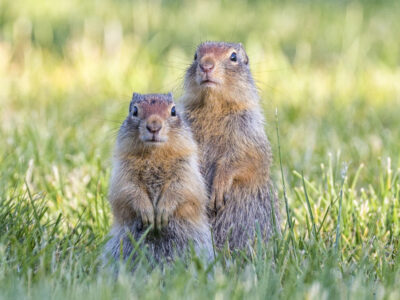
Ground Squirrel
Ground squirrels are adept excavators and can dig colonial burrows larger than football fields!
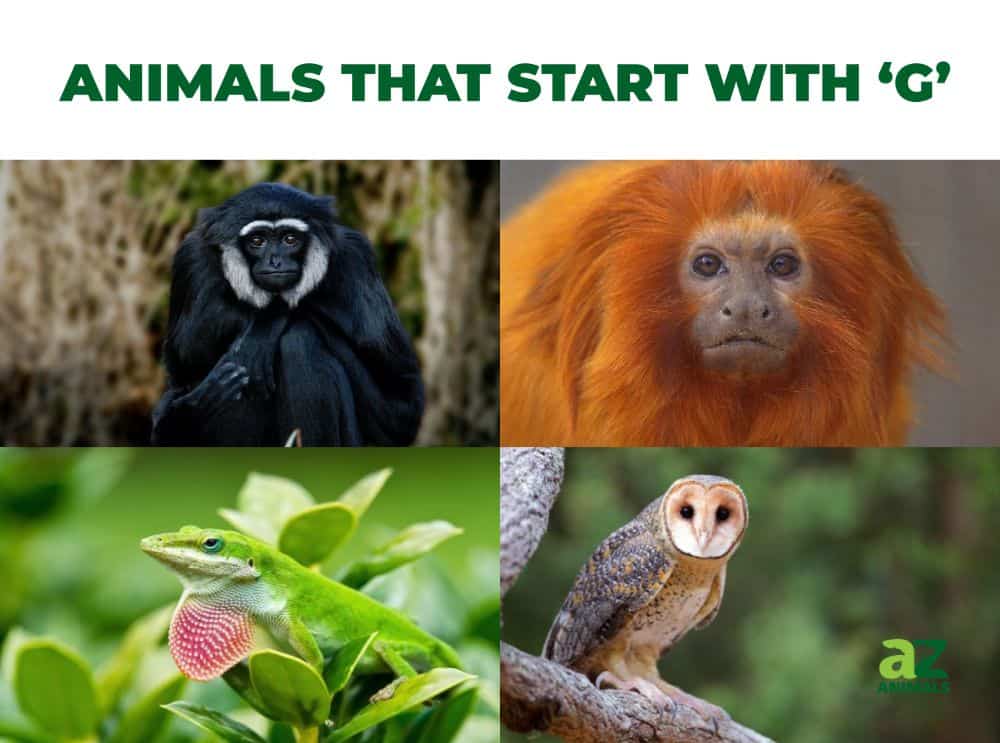
Animal by Letter Lists
- Animals that Start with A
- Animals that Start with B
- Animals that Start with C
- Animals that Start with D
- Animals that Start with E
- Animals that Start with F
- Animals that Start with G
- Animals that Start with H
- Animals that Start with I
- Animals that Start with J
- Animals that Start with K
- Animals that Start with L
- Animals that Start with M
- Animals that Start with N
- Animals that Start with O
- Animals that Start with P
- Animals that Start with Q
- Animals that Start with R
- Animals that Start with S
- Animals that Start with T
- Animals that Start with U
- Animals that Start with V
- Animals that Start with W
- Animals that Start with X
- Animals that Start with Y
- Animals that Start with Z
Thank you for reading! Have some feedback for us? Contact the AZ Animals editorial team.



